




See what’s happening at a different U.S. high school according to their newspaper’s Editor-in-Chief
SOUTH CENTRAL COPPELL, TX
What current events are students and staff talking about?

EDITOR-IN-CHIEF OF THE SIDEKICK
JAN. 31 SNOW STORM
smeharbinger.net
SENIOR
ANGELINA LIU
LAST YEAR, WE were hit with winter storm Yuri, which caused pretty much a statewide power outage, and it was really bad. Now we’re experiencing an ice storm situation causing school to be closed, which has become more common over the past few years. A lot of people at my school haven’t left their houses and are talking about it. Thankfully this year hasn’t been as bad as Yuri so far. But still, people here aren’t used to snow. Literally no one has a jacket, like no puffer jackets anywhere. We need to start preparing for storms like this though, because it’s going to happen more and more.
RIGHT Freezing rain and sleet cover the streets around Coppell High School during their snow day, with school closed due to inclement weather and possible unsafe road conditions.

Visit the website of Coppell’s news publication, The Sidekick
PRINT EDITORS
Peyton Moore
Francesca Stamati
ONLINE EDITORS
Lyda Cosgrove
Kate Heitmann
ASST. PRINT EDITORS
Greyson Imm
Katie Murphy
ASST. ONLINE EDITORS
Aanya Bansal
Maggie Kissick
PHOTO EDITORS
Rachel Bingham
Hadley Chapman
Macy Crosser ASST. PHOTO EDITORS
Liv Madden
Riley Scott
HEAD COPY EDITORS
Caroline Gould
Caroline Wood
ASST. HEAD COPY EDITORS
Aanya Bansal
Greyson Imm
DESIGN EDITORS
Nora Lynn
Anna Mitchell
ASST. DESIGN EDITOR
Bridget Connelly
VIDEO EDITORS

Abby Lee
David Allegri
PODCAST EDITOR
Emma Krause
SOCIAL MEDIA EDITORS
Mia Vogel
Paige Zadoo
ASST. SOCIAL MEDIA EDITOR


Bridget Connelly
SECTION EDITORS
PRINT NEWS
Addie Moore
ONLINE NEWS
Hassan Sufi
ONLINE FEATURES
Ben Bradley
PRINT SPORTS
Ava Cooper
PRINT EDITORIAL
Sophie Lindberg
ONLINE OPINION
Larkin Brundige
PRINT A&E
Veronica Mangine
STAFF WRITERS
Isabel Baldassaro
Sofia Brockmeier
Larkin Brundige
Maggie Condon
Mary Gagen
Avie Koeneman
Libby Marsh
Lily Simmons
Gracie Takacs
Connor Vogel
Lucy Wolf
Ada Lillie
Worthington
PAGE DESIGNERS
Afa Akwanka’a
Sofia Blades
Adya Burdick
Ava Cooper
Grace Demetriou
Elle Gedman
Veronica Mangine
Kai Mcphail
Lyla Weeks
STAFF ARTISTS
Sofia Blades
Caroline Daniels
Madi Maupin
PHOTO MENTORS
Riley Eck
Julia Fillmore
Claire Goettsch
Caroline Martucci
Emily Pollock
Mason Sajna
STAFF
PHOTOGRAPHERS
Paige Bean
Watch a winter sports face off in a trivia video series and see a gallery of the Rockhurst rivalry game by visiting smeharbinger.net or scanning the QR code
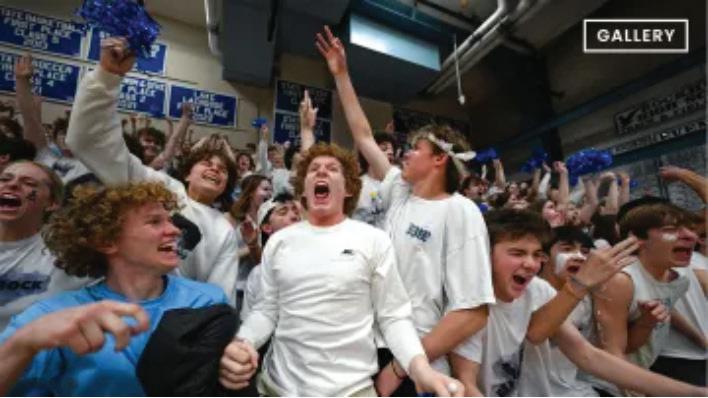
Kate Beaulieu
Lydia Coe
Audrey Condon
Sabrina Dean
Ryan Dehan
Charlotte Emley
Julia Fillmore
Will Griffith
Kenna Harrington
Molly Miller
Clara Peters
Tristen Porter
Alex Sajna
Lili Vottero
MJ Wolf
Amelie Wong
Madi Maupin
VIDEO STAFF
Luke Beil
Calen Domingues
Ryder Hendon
FOLLOW

SOCIAL MEDIA:
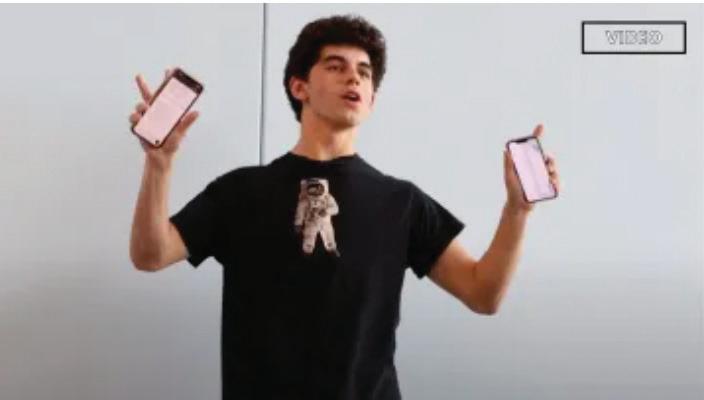
The Harbinger
smeharbinger
SME Harbinger
SM East Harbinger

The Harbinger is a student run publication. Published editorials express the views of the Harbinger staff. Signed columns published in the Harbinger express the writer’s personal opinion. The content and opinions of the Harbinger do not represent the student body, faculty, administration or Shawnee Mission School District. The Harbinger will not share any unpublished content, but quotes material may be confrmed with the sources. The Harbinger encourages letters to the editors, but reserves the right to reject them for reasons including but not limited to lack of space, multiple letters of the same topic and personal attacks contained in the letter. The Harbinger will not edit content thought letters may be edited for clarity, length or mechanics. Letters should be sent to room 413B or emailed to smeharbinger@gmail.com.
Schools should embrace Chat GPT to enhance class time and prepare students for future careers that emphasize computer science skills
NEW TECH JUST dropped! It can craft haikus, drop relationship advice and explain quantum mechanics in terms a 5-year-old would understand. Oh, and it’s free.
But for students? Hands off.
Chat GPT — Open AI’s new software and teachers’ worst nightmare — is already being used in offices to compile research and email clients. To prevent cheating, schools across the country are banning the chatbot from devices and WiFi networks, according to the New York Times. At East, it’s already blocked.
So the entire workforce gets to “cheat” — but not us.
The point of high school is to prepare us for our future. If that future looks like employing Chat GPT to research data or advertise a product on social media, then let’s attack it the right way, making our relationship with artificial intelligence symbiotic — not dependent. By utilizing this software and emphasizing computer science in school, we can prepare for an inevitable tech-advanced society.
AI is rising in value and effectiveness in our personal and work lives.
With programs that can generate unique art or write entire Hallmark movie scripts, it’s unavoidable. You can’t expect people to restrain themselves from using software that cuts to-do lists in half.
That’s why we should embrace new innovations — not assume they’ll only have negative implications. Instead of banning Chat GPT in academics for fear of cheating, let’s train students to be technicians with the necessary skills for future careers. Exploring the inner workings of AI and actively using it in class will prepare us for the rising demand in computer science jobs and knowledge of technology as a work tool.
From 2021 to 2031, employment in jobs related to computer and information technology is expected to increase 14.6%, according to the U.S. Department of Labor. Since programs like Chat GPT will replace jobs and heighten the need for tech professionals, students should learn more about building, coding and programming computers in school. Maybe then we’d appreciate our MacBooks as more than devices to click “submit” on Canvas.
Aside from adding more computer science-based classes, we can utilize AI by incorporating it into
The members of the editorial board who agree with the viewpoint of the editorial are represented by for, and those who disagree with the viewpoint are represented by against.
classrooms to plan lessons more efficiently like any other tool. Calculators and Google Docs don’t erase our ability to add fractions and handwrite — they just expedite the smaller tasks so we can derive multivariable equations and craft thoughtful stories.
For Chat GPT, this could look like using a chatbot-generated writing prompt to stimulate ideas for a creative story or forming personalized vocabulary lists. It can help teachers too, allowing them to devise lesson plans, rubrics and even letters of recommendation within seconds — saving time for more activity-based lessons.
That’s the beauty of new tech — it advances our learning. Students can use Chat GPT to generate lessons that cater to their learning style and reading level, freeing up time for interactive practice after a quick read of the online chatbot. For example, we could type in “explain artificial intelligence to a visual learner, using language a ninth grader could understand” and spend the rest of class testing software like Chat GPT.
Besides, banning the software won’t prevent students from accessing it through personal laptops and phones. Programs that detect AI-generated writing will also fall short when students learn to tweak a
few words and dumb down their chatbotwritten essays — teaching them only to be sneakier cheaters.
Instead, cheating should inspire a revamp of learning methods. Teachers could require students to submit the creative process behind their essay or assignment — such as early drafts or Google Docs document history indicating their changes.
As brainstorming and outlining promote creativity and individuality that a robot can’t fake, this approach will both prove academic integrity and emphasize drafting and organizing ideas. This process is more critical to learning than the final copy of an essay — a chatbot could generate that in seconds anyway.
By redirecting the software to streamline creative projects and a deeper understanding of technology, we can raise future coders and web developers — not master cheaters. Chat GPT is not the end of learning, and it’s not going to make us mind-numb zombies who can’t do anything ourselves — as long as we stop running away from technology and start collaborating with it.
StuCo to host a raffle during the Sweetheart dance on Feb. 11
STUDENT COUNCIL WILL host a raffle at the upcoming Sweetheart dance which will be themed “Queen of Heart.” The raffle allots for six winners of $10 Chipotle gift cards, in an effort to sell more tickets earlier in the week.
The first 300 people to buy tickets for the dance on Monday through Wednesday of the week of Feb. 6 through Feb. 10 will receive a playing card. At the dance, a suit and a card number will be called, and the six people that have the card will win a $10 Chipotle gift card. This is the first time
STUCO has done a raffle at a dance.
The goal of this is to promote early ticket purchases, raise funds for STUCO and popularize the dance.
STUCO has introduced the raffle because of the high amount of people that procrastinate on buying tickets – waiting until Friday or the day of to buy tickets at a higher price. This overwhelms STUCO because they don’t have a grasp on how many people will attend the dance. With students buying tickets earlier, STUCO can predict the amount of students coming
and prepare accordingly.
The raffle will happen around halfway through the dance at 9 p.m. The goal is to get people in the door and encourage them to stay for longer than the usual 20-30 minutes.
“We’re trying to get people to stay at dances long by adding fun things to do, hopefully people will stay and get to really appreciate the dances,” junior STUCO class representative Adam Minto said. “It’s also just a fun reward to people who show up and we hope to do more things like this.”
Belinder Elementary School is participating in a pilot project to train staff in CPR and AED
BELINDER ELEMENTARY WILL work with Children’s Mercy Hospital to pilot a new project to train its entire staff in life-saving health procedures including CPR and AED.
The pilot – Project ADAM – was founded in 1999 after the death of 17-year-old Wisconsin native Adam Lemel. Lemel collapsed, went into cardiac arrest and died while playing basketball — an AED could’ve saved his life.
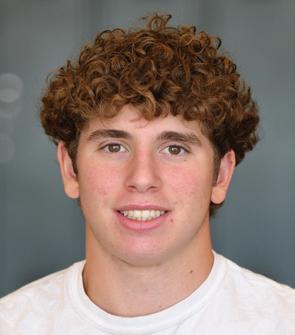
The pilot works to provide schools with the resources and supplies necessary to save lives in the case of cardiac arrest, heart attacks and other life threatening situations, according to projectadam.com.
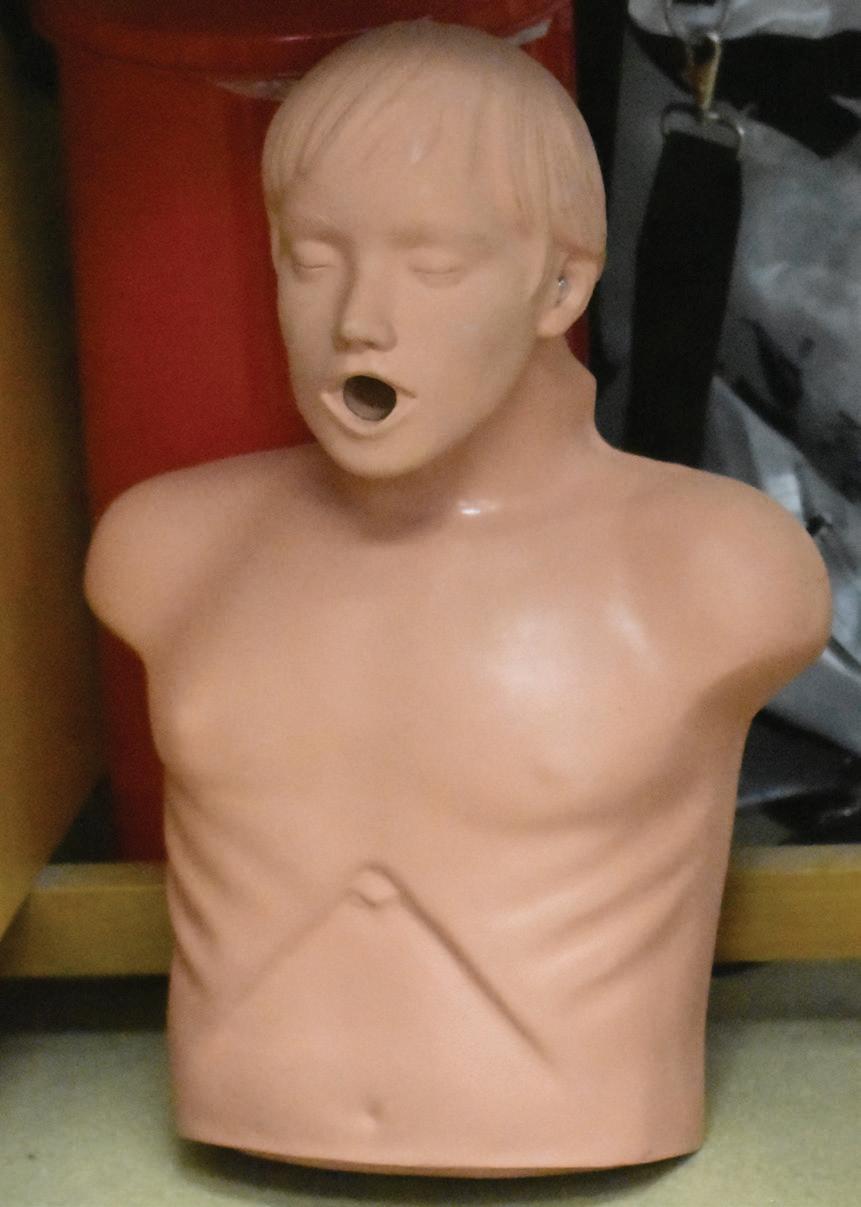
“As a school nurse, it’s very important to have a strong, knowledgeable staff to back you up and help in the case of an emergency,” said Belinder school nurse Lindsey Goss. “Since there is only one of me, chances are good that I will not be the first responder at the scene of an emergency.
The more staff members that are trained on how to react in the emergency situations, the better the chance of survival for the victim.”
Heart disease is the leading cause of death in the country, according to The England Journal of Medicine, and cardiac arrest is the most common immediate death. The average survival rate of out-of-hospital cardiac arrests is only 10.6% according to the American Heart Association.
Young people are not excluded from the risk of sudden cardiac arrest — it’s responsible for nearly 5% of all deaths in children from 5-19, according to simonsheart.org. The goal of The ADAM project is to lower that number significantly by arming schools with the necessary training.
Belinder will be the first school in SMSD to do this, with the goal that all SMSD schools will join this project in the future.
2023 Doomsday scientists updated projections on climate change’s imminent threat
ON JAN. 24, 2023, Bulletin Scientists announced we’re closer to a metaphorical “Doomsday” than we’ve ever been –90 seconds. The Doomsday clock is a metaphor for how much time humanity has until we face a level of danger threatening our extinction.
The more danger humanity is in, the closer the minute hand gets to midnight — Doomsday. The clock has been moved forward 5 minutes and 30 seconds since its creation in 1947.
Factors like climate change and the
threat of nuclear war impact the clock’s timing, which is assessed in January of each year. The clock has been moved forward 10 seconds from last January — 100 seconds until midnight.
Russia is second to the U.S. in global production of gas and energy, according to iea.org, so the Ukrainian invasion motivated European countries to become independent of Russia for supplies such as oil. This leads to more independent production and emission which leads to a rise in pollution and global warming,
according to thebulletin.org.
KESSLER STUDENT BODY PRESIDENTWHEN YOU BUY a ticket, you get a card that you’re supposed to keep. Then at the dance, we will be pulling cards and if it matches your card, you get a prize. We will be giving out stuff like Starbucks and Chick-fil-A gift cards, all the good stuff.
“Belinder is simply the pilot school for SMSD, and once we obtain our Heart Safe Designation,” said Goss. “I hope that it will spark other schools’ interest throughout the district.”
But critics of the Doomsday Clock don’t agree that it’s accurate and believe that there’s not enough evidence to back up the claims. Nevertheless, many believe that it can serve as a wake up call to humanity.
“We can’t prove this ‘doomsday thing’ from a logical standpoint,” Environmental Ed teacher Rusty Debey said. “But there are signs that humanity is headed in the wrong direction.”
20,565 1,085 360 271



HISPANIC OR LATINO ASIAN
OTHER 232
58 WHITE


AMERICAN INDIAN BLACK

Breaking down Prairie Village’s race and ethnicity as of 2020
*according to the United States Census Bureau
THE PRAIRIE VILLAGE Diversity Committee is hosting a town hall meeting at the Meadowbrook Clubhouse on Feb. 25, with a panel of speakers who will speak on diversity in Prairie Village.



The committee is currently evaluating how to best increase and retain diverse residents and education among Prairie Village residents.
This upcoming panel will address how best to continue the committee’s work. From the town hall, the committee will put together a strategic plan, outlining their goals and how they will accomplish them.
Prairie Village Diversity Committee Chair Cole Robinson invited Roeland Park Racial Equity Committee Chair Haile Sims to moderate the meeting. Sims has worked for the Roeland Park Committee to create a more welcoming and diverse city, specifically looking to make sure that current governing policies are bias free and welcoming to a diverse range of citizens.
“[Prairie Village] has this diversity committee similar to the Racial Equity
story by kate heitmann
The Prairie Village Diversity Committee is hosting a town hall on Feb. 25 to strategize increasing and retaining diversity of city residents
Committee of Roeland Park and so our meetings are aligned,” Sims said. “We have similar goals, and so I’m excited to connect with them and be part of this event.”
The committee was formed in 2020 in response to the Black Lives Matter movement. Since then, racial covenants on the housing deeds have been removed.
The committee has also been hosting events for all community members, partnering with local advocacy groups like Stand Up for Black Lives+ Prairie Village, Johnson County NAACP and the United Community Services of Johnson County.
The committee hosted their I Have a Dream Home Action & Celebration Event Honoring Dr. Martin Luther King Jr. at the Village Presbyterian Church on Jan. 14. They invited speakers from across the metro area to speak on King’s vision, which was organized by former East parent George Williams.
In addition to speakers, singer sololists invited the audience to stand and sing along to “Lift Every Voice and Sing.” During the hour-long event, the audience watched a clip from the PBS documentary, “The House
I Live in,” which details the rise of racial covenants in suburban communities. Poet Glenn North performed his original poems, “Overwhelmed” and “Check Cashing.”
The committee’s ultimate goal is to increase diversity and education among Prairie Village residents, however, it’s a difficult goal to measure, according to Robinson.
The committee’s success is difficult to measure due to the gap between when the U.S. Census is collected. The Census only occurs every ten years, with a reading half-way between each collection, measuring aspects such as race, gender and income of the residents.




“But I think that’s a big challenge, what do we do to try to encourage [diversity] and then how do we know if it’s working, which is fairly difficult,” Robinson said.


has this diversity committee similar to the Racial Equity Committee, or Roeland Park and so our meetings are aligned. We have similar goals, and so I’m excited to connect with them and be part of this event.
“I think the outward perception of Prairie Village is a lot different than what’s actually happening in Prairie Village,” Robinson said. “I think [Prairie Village has] gone through a lot of change, especially in my generation and with younger residents moving in with different priorities, different desires of what they want their community to look like and be. Most people aren’t going to take time if you live in the Northland, Lee’s Summit, downtown KCMO or in Shawnee, like how often are those people going to take time to actually reexamine what their impression of Prairie Village is to them?”
HAILE SIMS
In addition to increasing diversity, the committee is focusing on rewriting the perception of Prairie Village. According to Robinson, many non-residents believe that Prairie Village is based on the historically racist actions of the city— shown by the covenants written into the housing deeds.
The committee is considering using social media to convey these shifts in perception, as well as hosting more town halls, bringing in more speakers or hosting more celebrations, such as Hispanic heritage and pride month to recognize groups in the Prairie Village community.
DIVERSITY COMMITTEE CHAIR
I THINK [PRAIRIE Village has] gone through a lot of change, especially in my generation and with younger residents moving in with different priorities, desires of what they want their community to look like and be.
COLE ROBINSON
RACIAL EQUITY COMMITTEE CHAIR
[PRAIRIE VILLAGE]design by afa akwankaa
*according to the Nature Cardiovascular Research Study
DYSAUTONOMIA
REDUCED CEREBRAL BLOOD FLOW

NEUROINFLAMMATION
New studies answer persisting questions about long COVID as it ripples across the East community, affecting students and parents
Official medical terms describing the effects of long COVID on different organ systems
ABNORMAL GAS EXCHANGE
AUTOIMMUNITY
MCAS
CARDIAC IMPAIRMENT
POTS
MYOCARDIAL INFLAMMATION
STUDY SUMMARIES Findings of recent long COVID studies
NATURE
CARDIOVASCULAR
RADIOLOGICAL SOCIETY



OF NORTH AMERICA CENTER RESEARCH
PATIENTS ARE MORE LIKELY TO CONTRACT POTS AFTER COVID AT A RATE FIVE TIMES GREATER THAN AFTER VACCINATION
TEN PERCENT OF COVID
PATIENTS DEVELOP LONG COVID
— AT LEAST 65 MILLION PEOPLE WORLDWIDE
TEN PERCENT OF COVID
PATIENTS DEVELOP LONG COVID
— AT LEAST 65 MILLION PEOPLE WORLDWIDE
How long COVID has impacted sophomore Charlotte Ecton
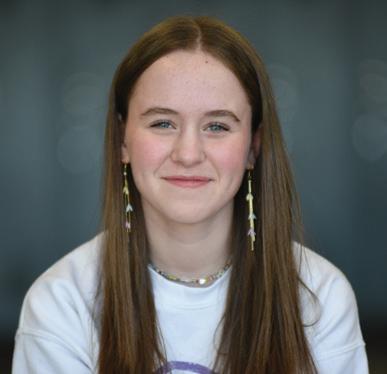
SOPHOMORE CHARLOTTE ECTON HAD COVID TWICE IN THE PAST TWO YEARS .
BOTH TIMES, SHE BELIEVES HER IMMUNE SYSTEM TOOK A HIT.
EVEN THOUGH I didn’t have COVID anymore, I just kept getting a cold every other week for months. I went to a lot less stuff because I just felt so tired all the time.




CHARLOTTE ECTON
SOPHOMORE
ATEN-MONTH-LONG cough. A warped sense of smell — mint toothpaste reeks of garbage. Fainting behind the wheel. Losing the ability to run.
A wide range of previously-unexplained health conditions sparked by long haul COVID-19 — an official medical condition where COVID symptoms persist three months after initial infection — are circulating East. Now new studies by the Scripps Research Center, National Institute of Health and Cardiovascular Research Journal are answering some parents’ and students’ questions about the condition and validating their experiences.
Ten percent of COVID patients develop long COVID, according to the latest Jan. 13 report by the Scripps Research Center, amounting to at least 65 million people worldwide with the condition — including senior Baya Aiken.
“The new studies are reassuring since they finally prove that it’s not just me,” Aiken said. “Other people have had really weird stuff happen to them because of COVID.”
Aiken lost her sense of smell and taste when she got COVID two years ago. Change in smell and taste is a common symptom of long COVID, according to Associate Professor of Medicine at Kansas University and East parent Michael Crosser. Chest discomfort, shortness of breath, body aches, heart palpitations and brain fog can also result, which Crosser saw at the long COVID clinic he worked at in 2021.
Weeks after infection, Aiken’s smell and taste returned differently than before — everything smelled worse. With no apparent solutions to the prolonged symptoms, she’s learned to cope with discomfort on her own as her senses slowly return to normal after over a year.
“Every time I brushed my teeth, I’d plug my nose because toothpaste tasted absolutely awful,” Aiken said. “It still tastes weird. I couldn’t eat red meat or chicken for so long because it literally smelled like trash. Normal food that my parents would regularly cook for dinner didn’t smell like
food anymore.”
Crosser believes doctors have difficulty treating long COVID like in Aiken’s case because it’s so new and hard to diagnose. Traditional pulmonary function testing and CAT scans — common diagnostic tests — almost always come back “essentially normal” for long COVID patients, Crosser says, even if they experience symptoms.
But a study published in December by the Radiological Society of North America introduced a new form of imaging: a Xenon MRI. The technology is the first known way to track long COVID, Crosser says, by showing blood perfusion changes in lungs that doctors were unable to quantify before.
“A lot of doctors thought people were making up their symptoms for a while,” Crosser said. “Unfortunately you still can’t just go to your doctor and have them order [a Xenon MRI] since it’s for research only, but my colleagues were doing the trial here and the pictures are actually quite stunning and helped to validate patients that were feeling abnormal.”
Despite no official diagnosis, East parent Robin Gedman experienced a 10-month cough after contracting COVID last January and believes she suffered long COVID. Her doctor prescribed her an inhaler that she found herself using 7-10 times a week to allow her to fall asleep.
Still struggling, Gedman was given a double-strength inhaler at her next doctor’s visit.
“I just couldn’t get rid of the cough when I would lay down at night,” she said. “I’d cough to the point of gagging.”
A cough-free period of relief was shortlived for Gedman after catching COVID again this past December, re-inflaming the issue and prompting her to reach for her nightly inhaler again.

“It’s concerning that doctors don’t have every answer yet, but understandable because it’s so new,” she said. “I do sometimes think, ‘Gosh, am I gonna die earlier because I had COVID? What’s going to happen to my lungs?’”
Even the most rare symptoms of long
COVID affect students. Junior Christian Gooley contracted postural orthostatic tachycardia syndrome — a condition that affects blood pressure and causes unpredictable fainting and brain fog — a few weeks after losing his sense of smell with suspected COVID in March 2020. It took more than 20 doctor visits over three months before he was officially diagnosed.
long covid
an official medical condition where COVID symptoms persist three months after initial infection
“It’s frustrating because I went to the Mayo Clinic for three days, three nearby hospitals and my pediatrician without solutions,” Gooley said. “I was passing out two or three times a day, and they just told me to drink more water. I started taking all these medicines and nothing was working. No one could figure it out.”
He still passes out a few times a week and is hoping that doctors can find a way to prevent his fainting soon.
According to Crosser, patients like Gooley are more likely to develop POTS after contracting COVID, but he hasn’t seen POTS patients himself since the condition is so uncommon. A December study in the Nature Cardiovascular Research journal asserts that the risk of POTS is increased after COVID vaccination — still, at a five times lower rate than after COVID itself. But the link between long COVID and POTS still needs to be studied, according to Gooley, to ensure that other patients have a smoother diagnosis experience than him.
the most prevalent symptom.
“I think every single patient I saw had an element of fatigue that was not present prior to their COVID diagnosis,” Crosser said.
Parent Bob Griggs originally thought his excessive tiredness was from working 70hour weeks as an ICU nurse and practicing martial arts — on top of catching COVID in early 2020. But as weeks passed, shortness of breath, dizziness, blood pressure issues and brain fog added to his fatigue, and he was diagnosed with long COVID by doctors he was seeing once a week.
“I honestly thought I’d get better,” Griggs said. “But I still can’t do physical activity as simple as walking and standing sometimes. I couldn’t go to work without endangering patients, so I haven’t gone back since July 2021.”
I HONESTLY thought I’d get better. But I still can’t do physical activity as simple as walking and standing sometimes. I couldn’t go to work without endangering patients, so I haven’t gone back since July 2021.
BOB GRIGGSEAST PARENT
Without Grigg’s income or worker’s compensation, his family is experiencing financial strain forcing his wife to pick up an extra job while he attempts online classes without much success. He’s applied for social security disability benefits in the past months and is waiting to hear back.
“I can’t read for more than 15 minutes at a time without getting exhausted, and books I used to enjoy feel like trying to understand a dense chemistry textbook,” Griggs said. “I can sleep all day and all night and still be tired. There’s some days where I can’t do anything except lay in bed, and there’s not many jobs out there that you can work for 30 minutes then take a nap.”
“It’s a little late for me, but the new studies excite me because they should help other people with new medicine and techniques,” he said. “A lot of doctors seem super interested, and I’ve already been in trials. We all want to see progress happen.”
According to Crosser, a more common long COVID symptom than POTS is fatigue — consistent with a December study from the National Institute for Health citing it as
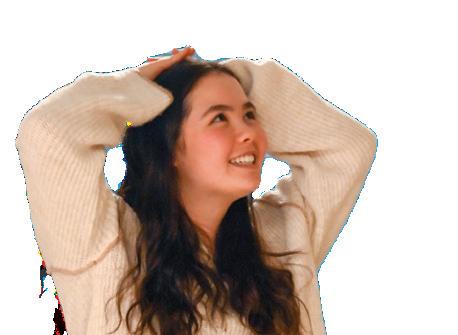

He’s back to visiting the doctor only once a year and wishes they knew more about why some days he feels worse than others, how long COVID is attacking many areas of his body and possible consequences of catching COVID again.
“There’s not even much point in going to the doctor regularly because they don’t know how to help,” Griggs said. “There’s almost nothing currently doable to help me other than to treat my symptoms. The new studies are great, but they’re not fixing my long COVID problem at the core yet.”
Four main reoccurring long-term COVID symptoms

EAST PARENT
I JUST COULDN’T get rid of the cough when I would lay down at night. I’d cough to the point of gagging.
ROBIN GEDMAN
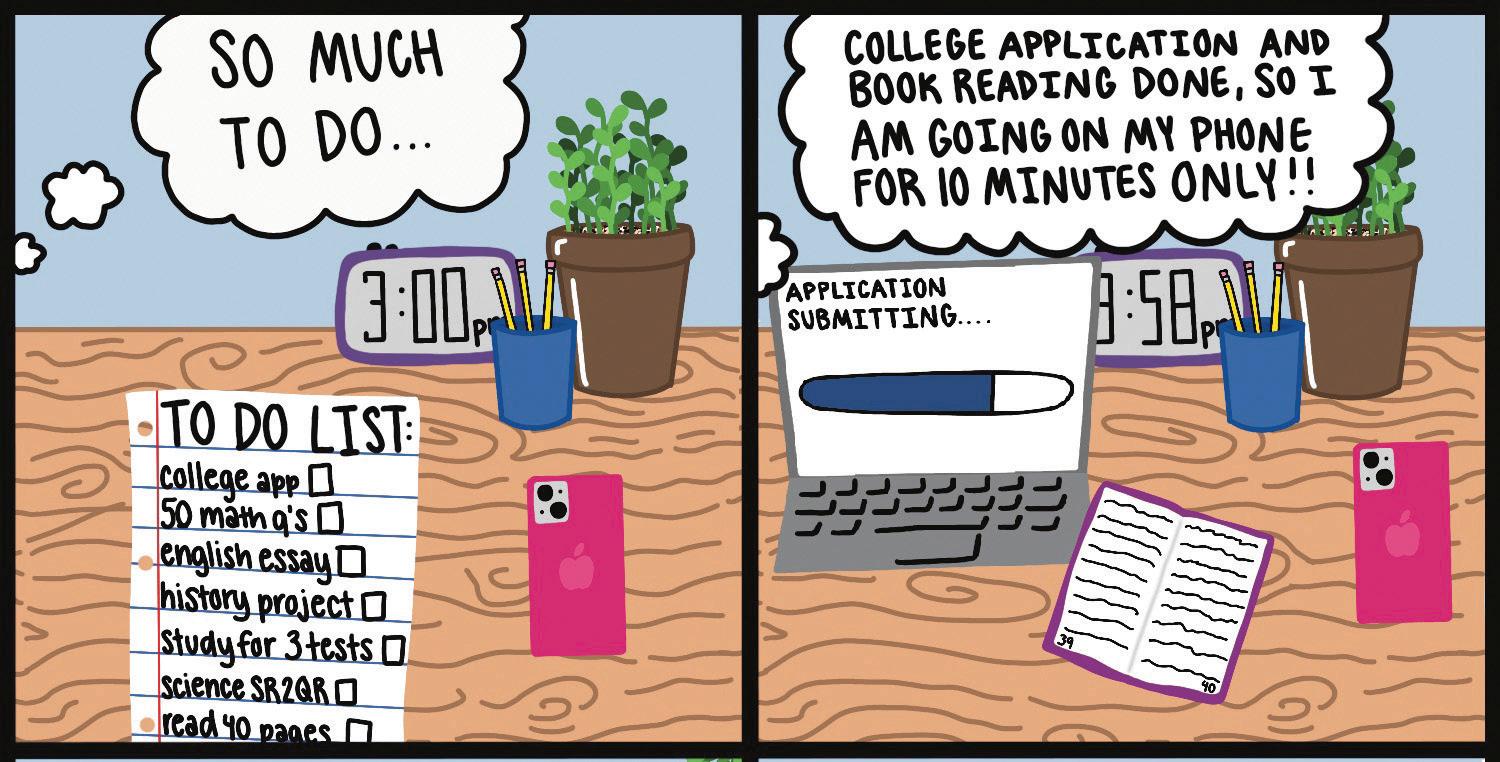
Students weigh the effectiveness of Xello and YouScience
DO YOU THINK THAT XELLO AND YOUSCIENCE MAKE STUDENTS MORE NERVOUS ABOUT FUTURE DECISIONS THAN IT ACTUALLY PREPARES THEM?
*Instagram poll of 181 votes
YES NO 27% 73%
SENIOR
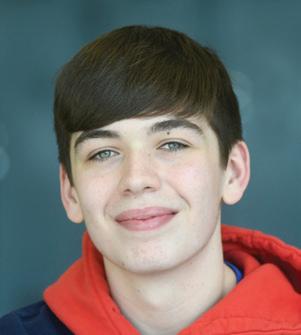
I FEEL LIKE it puts students [YouScience] a box. Especially when most people start YouScience in middle school, and you can’t retake that test. What I liked in seventh grade is not the same as senior year.
 EMMA PRICE
EMMA PRICE

I DON’T THINK it necessarily makes them nervous because when I flled it out, it actually helped me discover more of what I wanted to do, so now I know what I wanna do for the next four years throughout high school and maybe college.
It’s easy to lose track of time when your phone is a distraction
IT HELPS STUDENTS narrow down or explore the real options of what they think in a career. I don’t think it makes them nervous. It just helps them explore real options.
Recent Instagram polls on this issue’s opinion stories
DO YOU THINK THAT THE NEW COMMONS SPACE IS USED TO ITS FULL POTENTIAL?
YES NO 88% 12% *Instagram poll of 252 votes
DO YOU THINK IT’S BENEFICIAL TO PUT YOURSELF IN EMBARRASSING SITUATIONS ON PURPOSE TO EXPOSE YOURSELF TO THEM?
*Instagram poll of 219 votes
YES NO 54% 46%
DO YOU THINK THAT SAYING “I LOVE YOU” TOO OFTEN MAKES THE PHRASE MEAN LESS?
YES NO 40% 60% *Instagram poll of 260 votes
Follow the Harbinger on social media to participate in our polls
@smeharbinger @smeharbinger
@smeharbie @smeharbie

I’D SAY I’M known as an outgoing person, an extrovert. I like making jokes and goofing off with friends — I’m not shy.
But the more I think about it, I’m only ever really bold in my own bubble of friends. I never find myself chatting it up with strangers or starting a dance party in public.
So I challenged myself to take three risks to obliterate my comfort zone this week. I purposefully embarrassed myself to see if I could handle it emotionally — and learn a few things about having confidence in social settings.
I attempted to record videos in public for my senior recap montage, socialize with strangers while waiting in lines and speak up in my first hour math — a class I don’t normally talk in because I only know two people. While these seemingly small tasks might come easily to some, they resulted in an anxiety-filled week for me.
I’ve been carrying around a camera all year, videoing the special last moments of high school, to create a video compilation by May — except I’ve been too embarrassed to film at school. Who wants to be the guy who whips out a camera to vlog solving equations in Algebra?
So the Rockhurst rivalry basketball game proved to be a prime chance to capture important senior-year memories — all in public.
There’s nothing that screams “high school” more than selling custom shirts reading “Beat Rock” in the student store by the pizza line during lunch, except maybe filming it selfie-style.
As I clicked on my camera, I felt my cheeks heat up from stares. The humiliation began. I didn’t have the excuse of saying that I was filming for the newspaper because I only had a small digital camera — as I stood in the store, I had to accept the stares that were being placed on me. Something about being the center of attention in a room full of students doesn’t sit right with me.
The worst part is, it wasn’t worth it: sacrificing my ego for one or two usable clips for my video. It was exhilarating in the worst way. I couldn’t handle the wrath of a judgemental freshman.
After that self-directed punishment, I forced myself to stay off my phone in line publicly, and *wince* talk to strangers.
I’m not sure if this is just a me thing, but one of my worst foes is the Chipotle line. Every time my stomach’s rumbling for Mexican, I recognize at least five
acquaintances, and I’m rarely in the mood for chit-chat because I’m only thinking about a chicken bowl. I always end up awkwardly gluing my eyes to my phone — sometimes even pretending I’m on a phone call.
This week when lunch came around, I decided that it was time to overcome my Chipotle line-phobia. Shoulders back and chin high, I entered. Sure enough, one of my old neighbors was standing two spots ahead of me.
Instead of pretending like I didn’t see them, I kept my phone in my pocket and asked them how they were doing. Receiving a response of, “Good, how are you?” and the short conversation after, I realized that my phobia wasn’t that paralyzing.
After our conversation, I didn’t check my phone once. Every time the door opened, I forced myself to glance up in case I knew them instead of fearfully side-eyeing them — successfully entering and exiting the store with zero awkward interactions.
I’m proud of myself for ignoring my phone — and feel a mile closer to waiting in public lines without scrolling mindlessly through Instagram.
To fully embrace embarrassment, my last test was engaging in math class. I’m in a different math class than my friends each
year, making me uncomfortable raising my hand out of fear that I will be judged for stupidity — no matter how much I’m wondering why y = mx+b.
With the plan to conquer my fear of rejection when it comes to math class, I was ready for class on Monday morning with a calm mind and a hydrated throat to ask questions without my voice quivering. It was sad to see how quickly I failed. As soon as I got to a question that I couldn’t answer in my note packet, I tried to ask for help, but I froze and the only thing that came out was a small whisper.
While my anti-embarrassment mission was partly successful, some insecurities are difficult to overcome. While speaking to an old friend, I’ll never be the person who doesn’t have a mini panic attack when having to speak in a room full of strangers.


Though I didn’t conquer Algebra 3, this week made me realize that embarrassment can improve the confidence you have when in public. I recommend a week like this to anyone who needs to figure out where their anxiety stems from, for me it’s a fear of rejection. It was like tasting unknown, terrifying mental foods — you’ll never know what you like until you try it.
 Ben rates the difficulty and embarassment level of each daring activity on a scale of one to three
Ben rates the difficulty and embarassment level of each daring activity on a scale of one to three
Purposefully embarrassing yourself improves confidence in public — here’s how it worked for me
2 /3 USING A CAMERA AT SCHOOL
3 /3 SPEAKING UP IN CLASS
1 /3 SMALL TALK IN CHIPOTLE LINE
RUNNING INTO PEOPLE you know and trying to stay off your phone is hard for anyone, but you just have to push through because that’s part of life.
I TRIED TO be more personable, but I just couldn’t.
IT WAS SUPER humiliating, I won’t be doing it again.
ILOVE YOU.”
How many times have you heard that? What does it really mean? Who says it?
The term is so frequently thrown around that many of us don’t even process its meaning. If you’re lucky enough to have grown up in a supportive home, it may even roll right off the tongue with casual daily use.
Is that a bad thing?
I can’t remember the first time I told my mom I loved her. I couldn’t even pinpoint a specific time she did. What instead comes to mind is a montage of “I love you”s every time my parents released me from a hug to go to preschool or blew me a kiss from the minivan before each soccer game.
I know my parents and three older siblings love me, but does the phrase lose its value after being said so many times? Saying “I love you” often doesn’t make it untrue, but it can dilute the meaning of those three words.
Despite the common use of the phrase, students vary in how they show affection. In an Instagram poll of 332 students, 281 said they tell at least one person “I love you” once a day. Only 15% don’t say the meaningful words daily.
And that’s OK.
For my friend with a less verbally-affectionate family, it’s clear that her relatives still adore her the same as mine — without audible reinforcement. They communicate in other ways, like spending time with one another at their favorite restaurant or sarcastically joking around when briefly seeing one another between activities.
Because of this, she’s less likely to respond “love you too” to heartfelt goodbyes from me and my friends. It’s not that she doesn’t love us — she just shows her affection by paying for my Taco Bell orders and sending me concert TikToks she’d know I like. She saves the words for special moments when we reunite after weeks without seeing each other.
under the stars may feel like the right time to say those three words, but if you don’t truly feel the spark, the invalidity behind such a powerful phrase leads your relationship straight down the rabbit hole of trust and awkwardness.
Many teens see their first “I love you” as a milestone in a relationship, but are also uncertain when to declare it — and if they even mean it — leading to self-doubt. Did I really just say that? I don’t even know what love is. Do I love her?
At the same time, hearing your partner profess their love may pressure you into echoing it back. The discomfort and doubt disfigures the moment from a special memory to a fightor-flight decision.
That’s why it’s important to choose when you’re ready to profess your love.
Saying it too often might lead you into a routine of letting the words flow out of your mouth, resulting in feelings of dishonesty and insecurity if you don’t truly believe it. Now you may question, “Am I saying it too much?”
This is where the small, yet meaningful phrase may begin to lower on the scale of love.
On the other hand, it can also bring reassurance into a long-term relationship that may be necessary. According to a YouGov survey, more than half of couples in relationships lasting from one to five years say “I love you” on a daily basis.
Even in family relationships, the phrase is assuring — if used meaningfully. I may say “love you” to my family when walking out the door to go out with friends or hugging my mom after she hands me my breakfast in the morning, but I mean it every single time. I’ve just grown up with a family who casually reaffirms their feelings.
If you’re not using the word out of fear that it’s some kind of curse word, know that expressing your emotions will assure your loved ones of their value.
85% 55% AFTER 10 YEARS, ONLY
When she occasionally drops an “I miss and love you,” I almost jump back in shock. It sounds like less of a casual “See ya later!” and more of an authentic “You mean so much to me.”
That being said, it’s OK to prefer verbal reinforcement — as long as you mean it. Relationships can be ruined by insincerely saying “I love you.” A candle-lit dinner
The phrase should be taken to heart even in simple, non-romantic relationships. While we shouldn’t throw it around with strangers, its significance can be exaggerated at times. Some view the words as rare and something to only tell to one person, while others see it as a phrase everyone should hear and express, bringing conflicting feelings within relationships.
And saying it often doesn’t have to mean it isn’t special. It’s just not a rarity to some. “I love you” doesn’t have a set meaning or value for each person — when used correctly, the phrase is always meaningful.
SAYING IT TOO often might lead you into a routine of letting the words fow out of your mouth, resulting in feelings of dishonesty and insecurity if you don’t truly believe it.
While saying “I love you” frequently doesn’t make it untrue, the phrase loses value when you stop meaning it
anna mitchell

The space and money could’ve been used for these amenities instead of the common area ALL NEW CLASSROOMS
WHEN I SAW the new commons room for the first time, I was practically jumping for joy while walking down the north ramp. The massive windows and high ceilings were a welcome sight to sore eyes after dealing with nine months of yellow tape and loud construction noises. Yet, after the initial buzz wore off, I was left wondering the purpose of this new space.
When I saw the new commons room for the first time, I was practically jumping for joy down the north ramp. The massive windows and high ceilings were a welcome sight after dealing with nine months of yellow tape and loud construction noises. Yet, after the initial buzz wore off, I was left wondering the purpose of this new space.
The intention of this new space was that it’d be a collaborative space where students could work together on assignments and projects, according to principal Jason Peres.
And that isn’t a bad idea, but up to this point, the new space has been underutilized by both teachers and students. It has to be asked — should this new space have been used for something else entirely?
Similar to the library, the commons is dedicated to giving students a space to complete homework and study for classes. The commons was left without any source of supervision to facilitate discussion and group work.
But this means there’s no one to keep students on task or shush them if they’re being too loud.
Unfortunately, students have taken advantage of this new freedom. Rather than
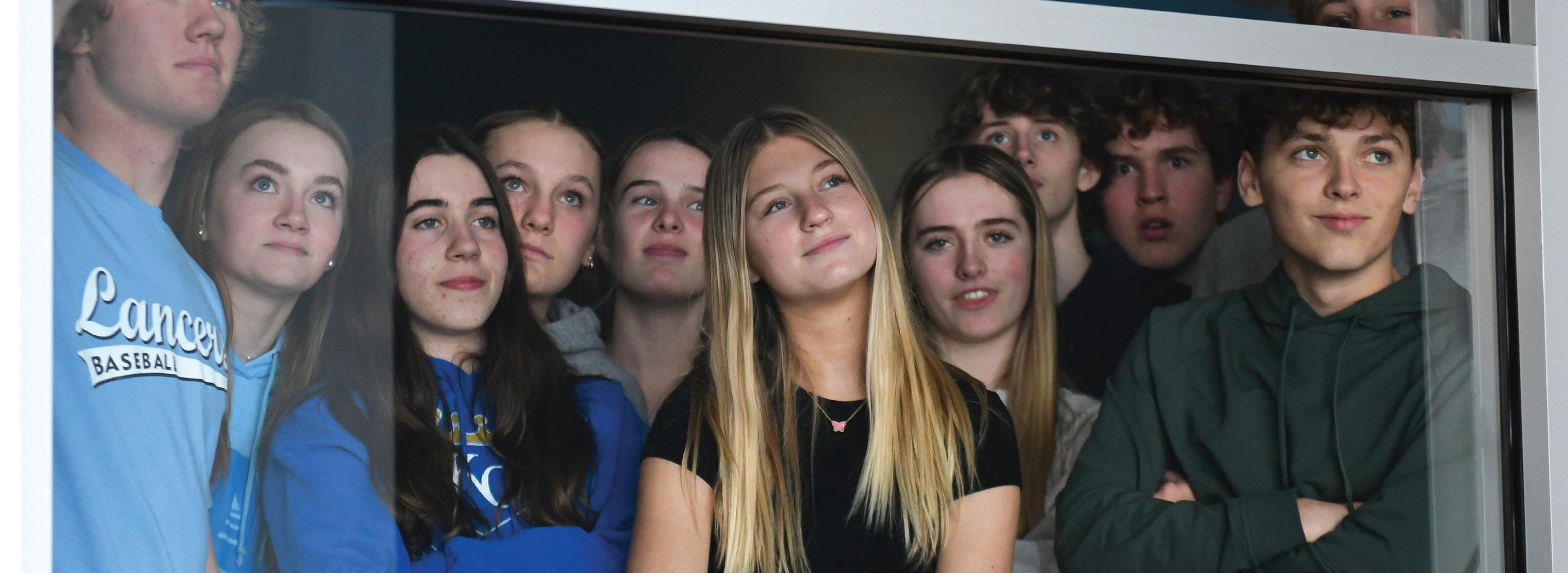
studying flashcards for their next Psychology test, students in the commons can be seen playing paper basketball or filming TikToks.
The frequent misuse of the commons has caused students who really do wish to study to move elsewhere. It’s difficult to accomplish any work with the bombardment of distractions from around the room.
While rehearsing an oral argument for English class with a few other students, I simply couldn’t concentrate on the task at hand. Even though we positioned ourselves the farthest possible from the students skipping class, we were hopeless to the onslaught of paper airplanes crashing beside us and echoes of laughter as a result of the large open space. This eventually forced us
dollars received from the district to build a tremendously large study hall, the district facilities committee should’ve addressed the needs of our teachers and built new classrooms.
East has over ten teachers still without a homeroom — teaching out of a backpack. This used to be the case for business teacher Mallory Dittemore until she was given one of the new classrooms. Being a traveling teacher was extremely hectic for Dittemore. She explained that she was forced to spend unnecessary time planning how to displace the materials from class to class rather than focusing on the actual content.
This is unacceptable and a problem that should have been prioritized over building a new space for “collaboration” when we already have a library serving that purpose. Our teachers are already underpaid and overworked — they shouldn’t have to deal with the added stress of not having their own classroom.
to gather our books and move to the library.
Even for teachers who can provide their class supervision, the room has been relatively useless. Unless your course requires a lot of group discussion, why would you move a room full of 30 students down to the commons? The commons doesn’t make teaching any easier or any more engaging , it’s just a larger space. In fact, the administration has had to encourage teachers through emails to bring their classes down to the commons due to under-usage to Brett Kramer.
Rather than using the three million
With additional space available, the district facilities committee should’ve prioritized our teachers and ensured that each of them has their own space from which to teach. Every teacher deserves a classroom.
Regardless of whether or not the commons room should have been used for new classrooms, one thing is clear — so far it has been underutilized. The administration needs to find a way to make it more serviceable, whether it be by bringing in a supervisor, using it for the business and marketing department, or forming makeshift classrooms.
design by elle gedmanJunior Mia Riscovallez arrives at the Rockhurst campus at 3:45 p.m. and waits in line behind athletic director Ryan Johnson. “I think the pros about the ticketing system were that the upperclassmen were let in first and it was organized,” Riscovallez said. “I thought the cons were that we had to get online at exactly eight to get a placeholder, and it didn’t even guarantee a spot.”
RIGHT Students line up in grade order beginning with seniors and pep execs waiting with their presale tickets. East students weren’t permitted on Rockhurst’s campus until 3:30, making for a nearly four-hour waiting experience before sales began at 4:30 for the JV game at 5:30 and the Varsity game at 7 photo by I macy crosser


BOTTOM MIDDLE Students with a placeholder ticket begin to line up outside the doors of Rockhurst at 3:30 Associate Principal Susan Leonard stood among the students as they waited in line. “In the past we’ve had people just show up and get in the line,” Leonard said. “So we thought if we kind of created a little bit of organization before we went to Rockhurst it might help and it seems like it did.”
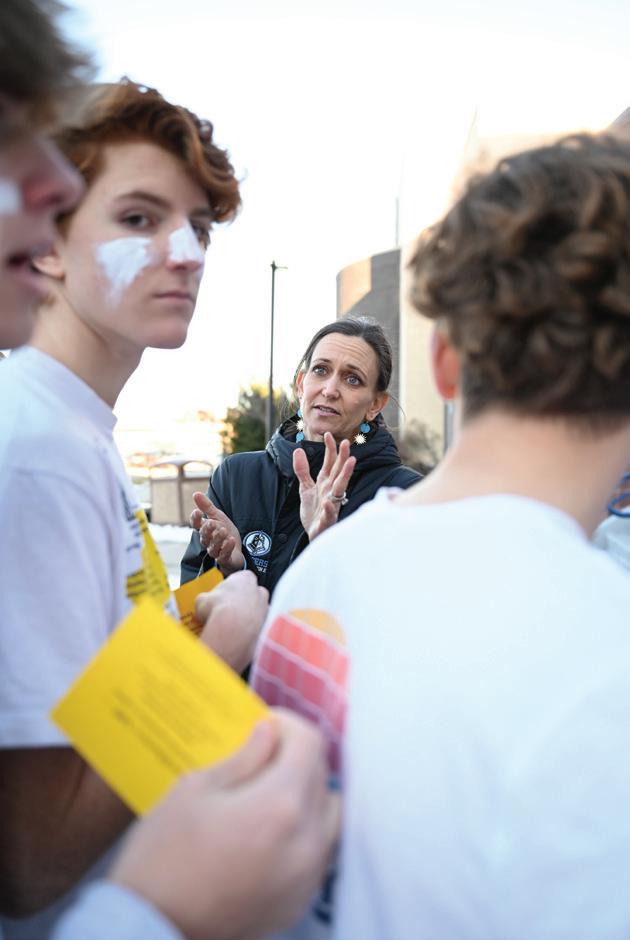
photo by I macy crosser
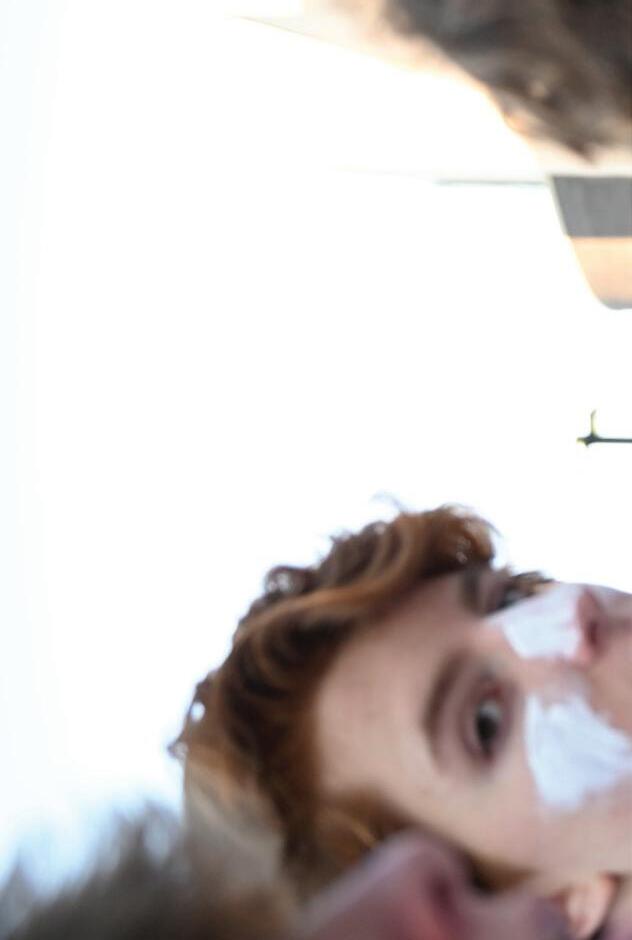
HARBINGER design by hadley chapman
The East student section was limited to 325 students for the rivalry basketball game against Rockhurst, creating a ticket shortage and multi-step purchasing process
LEFT Senior Ethan Curran waits in line to enter Rockhurst while surrounded by other seniors. “Last year, we had probably around 500 or more students, but they only let 300 of us this year,” Curran said. “I think the size of our student section was kind of muted by their size.” photo by I macy crosser
BELOW Admin and teachers hand out placeholders, colorcoded by grade level, to students that were one of the first 325 students to fill out a google form sent out the Monday before. photo by I paige bean


Scan here to purchase photos from this event






Junior girls share how they got their WPA dress and why

A look at what’s happening inside the halls of East


DURING HOCO SEASON, the common dress sites are pretty backed up, so I chose a different site to buy from but it was taking a really long. I got worried that the dress wouldn’t come in time so my mom advised me to pick out a backup.
EMMA KUHLMAN
I GOT A TEXT FROM Urban Outftters saying that there were sales up to 70% off on dresses a month ago. I was immediately interested because I knew I had to get a WPA dress soon, and it was great that I could get it on sale.


HAVE YOU BOUGHT YOUR SWEETHEART DANCE OUTFIT YET?
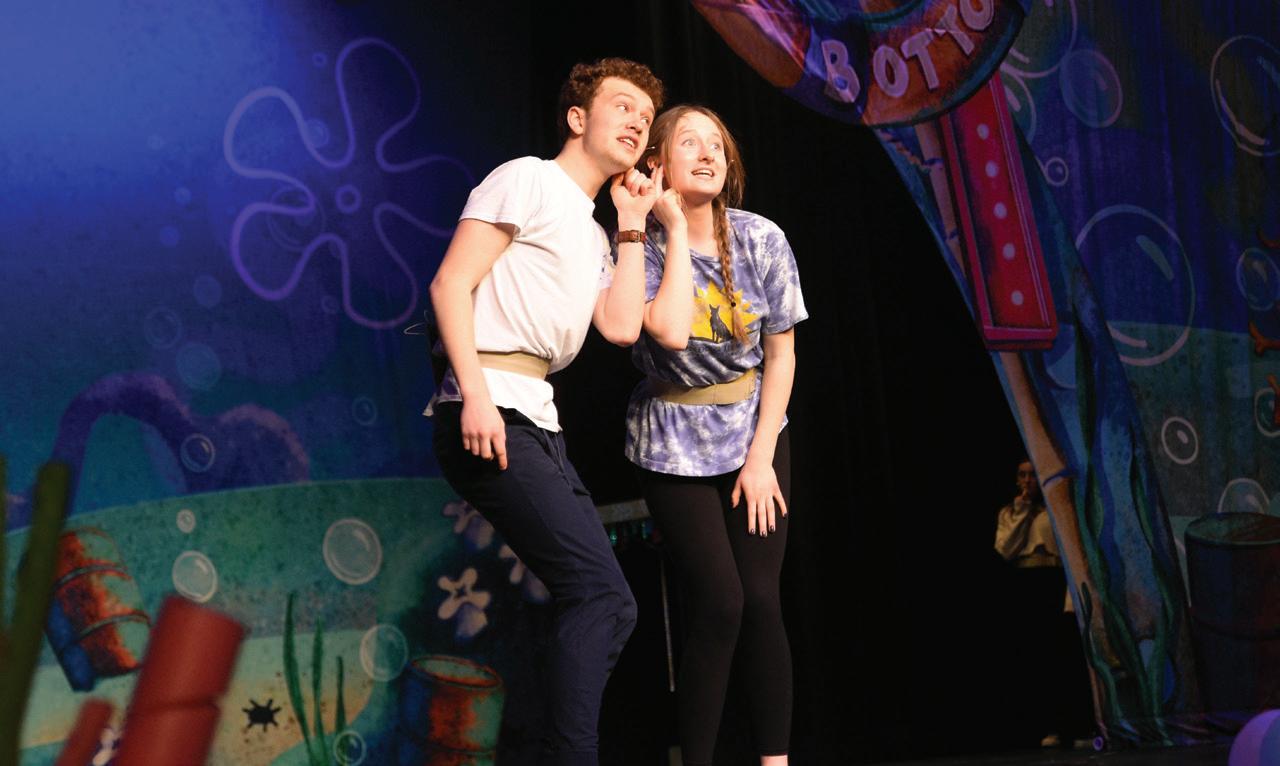
*Instagram poll of 238 votes
YES NO 47% 53%
Students share insight on their lives being bilingual
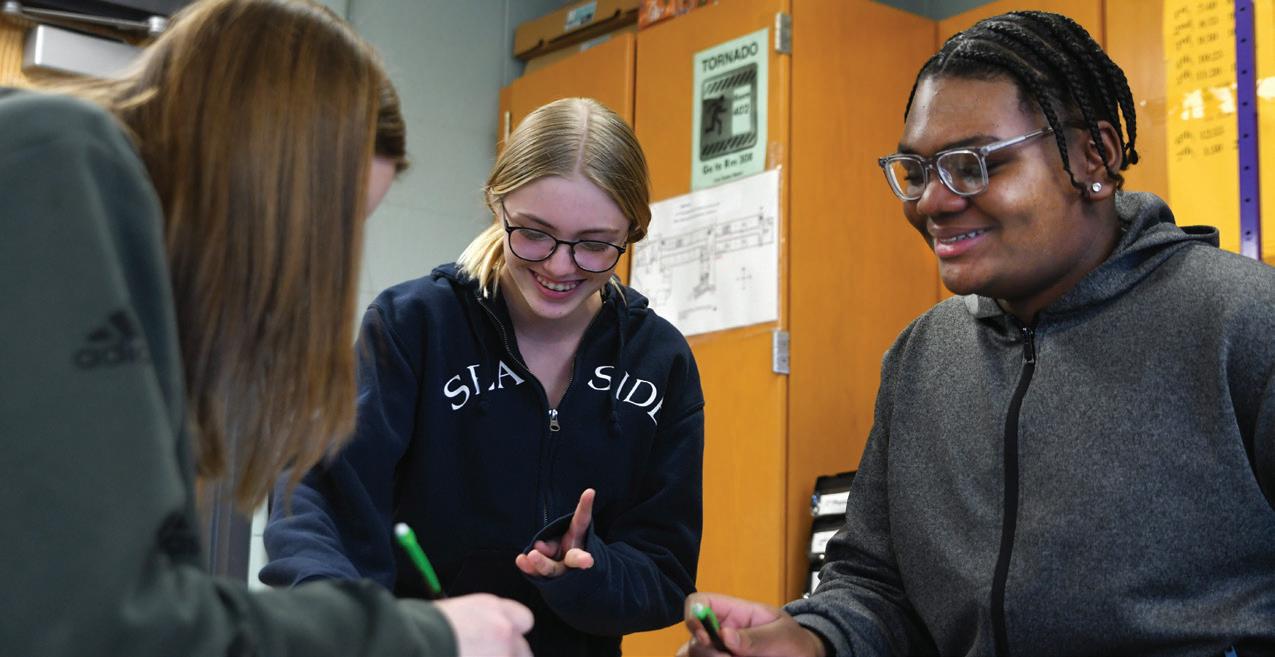
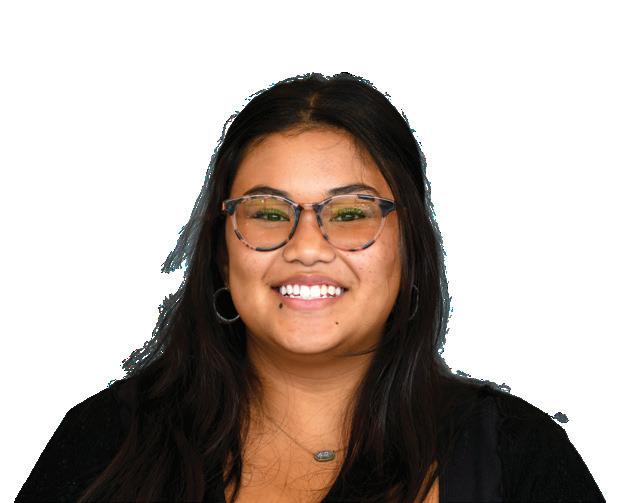
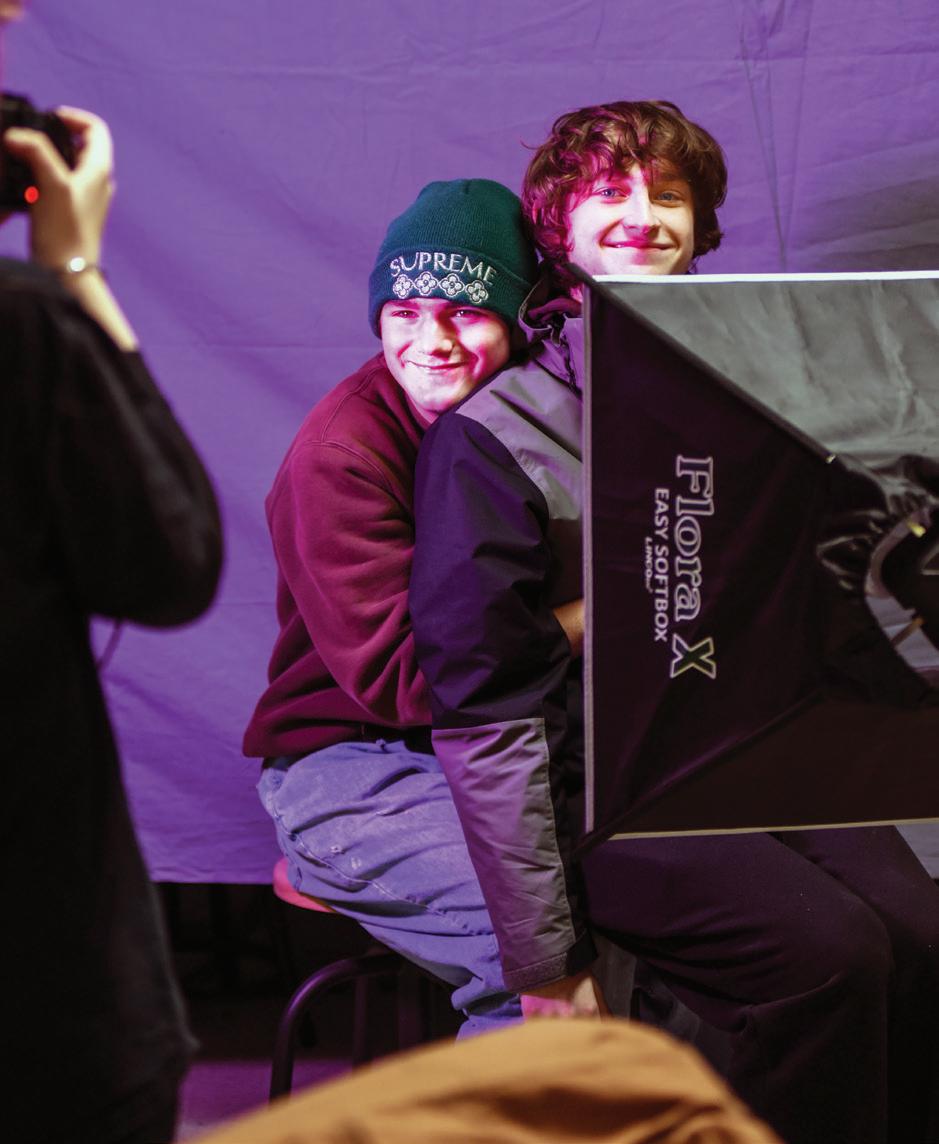
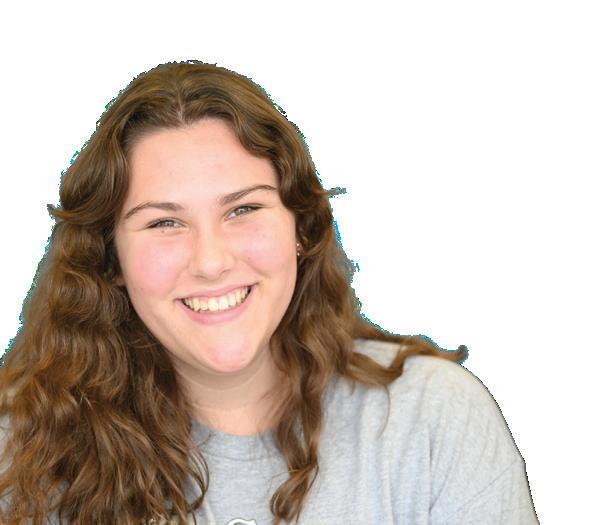
J UNIOR DAVIS MUTHER had spent two hours slumped over his test prep booklet studying for an upcoming exam. But he wasn’t memorizing velocity formulas for his third hour physics test — he was studying air patterns and flight maneuvers for the Federal Aviation Administration.
Each page he flipped was a step closer to getting his private pilot’s license.
The “checkride” or flight test, another part of the exam, is what Muther has been training for since 2021 with a private instructor at the Flying Club of Kansas City.
The license would give Muther an edge for when he applies to the Air Force Academy — which has an acceptance rate of 12.4%. And even if he doesn’t get in, he still wants flying to have a place in his life. His fight bag, a tiny duffel bag where he keeps his charts, headset and an extra jacket goes to show his dedication and a license grants him a permanent attachment to the hobby.
“I always thought that flying would be one of the most difficult things a person could do because it’s just so technical,” Muther said. “But once you get the hang of it, it feels just like driving — it becomes second nature.”
Practical training starts with Muther and his instructor steering a Cessna-172 out of the hangar. They tediously go through their checks — making sure the engine is running and the dials are working. Once
they’re ready, they call for the tower to get them on the runway and signal for take-off.
“The first couple seconds after you takeoff you get scared because it’s a natural tendency to feel that you’re accelerating and your body knows that you’re in the air,” Muther said. “But after that, you get used to it, you sit there and you fly a plane — it’s really easy.”
The main focus of Muther’s training is on accelerating on the runway, taking off, circling around and then landing. After practicing tiring, labor-intensive air maneuvers like turning, stalls and banks, he takes breaks during flights and his instructor takes over — Muther uses this time to examine the dials and knobs embedded in the plane’s dashboard.
Along with passing the written and practical tests, the private pilot license also requires 80 hours of flying time. Since his first takeoff on Oct. 30, 2021, Muther has knocked off 30, spending his weekends soaring high over prairies and farm land.
“I like seeing the views and looking out the window,” Muther said. “It feels like a good escape to get away from everything.”
It’s hard to find time for flying classes while still attending school and participating in symphonic, marching and jazz band, so Muther cherishes every second in the sky as a teenage pilot-intraining.
“Flying has just always been an interest for me, no matter what I do,” Muther said.
A LTHOUGH SENIOR GENESEE McKenna is majoring in business, it’s not her passion. Business is the “Plan B” for her ultimate career goal — aviation.
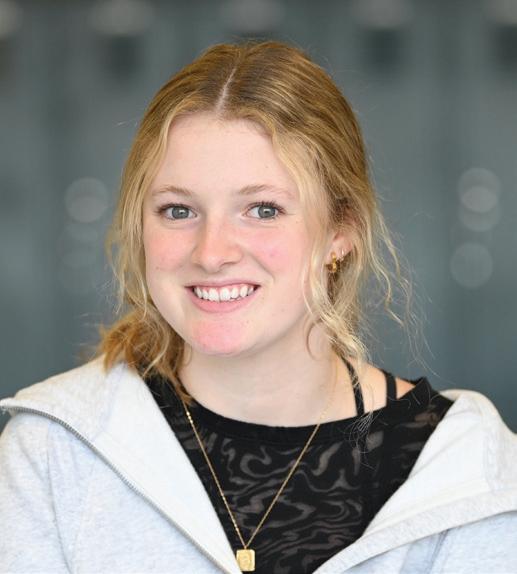
Originally, McKenna planned to major in aviation at Oklahoma State University, Auburn University or Kansas State University, but decided to go to Grand Canyon University in Arizona to pursue her degree in business while taking flying classes on the side because of the high cost of flying programs — about $82,000 for a professional pilot bachelor’s degree at K-State.
“[Aviation] is super expensive, so you have to accept the fact that you’re going to be in quite a bit of debt after [school] just until you can get on your feet with a job,” McKenna said.

Growing up with three cousins who became pilots and a stepdad who flies for United Airlines, she’s been around propellers and cockpits for most of her life. It wasn’t until she went on a “discovery flight” with her stepdad’s friend in December of 2022 that her delight for flying took off. Tagging along in the cockpit, McKenna learned the basics of flying, from pre-takeoff checks, to climbs and descents. For a couple of seconds, she even clutched the steering joystick herself.
“I ended up being able to fly the plane, just for a second, to make sure that it was actually something that I wanted to do,” McKenna said.
Surprisingly, she wasn’t nervous at all and found flying easier than expected.
“Everyone thinks that flying a plane is super intimidating and it’d be super scary and you’d get up there and you wouldn’t know what you were doing,” McKenna said. “But it’s honestly super simple once you figure out the basics.”
She is now enrolled in a “ground school” program through Johnson County Community College where students study aerodynamics, airport rules and weather patterns and eventually fly planes themselves. When the course starts next month, McKenna will attend classes two nights a week for two months from 6-9 p.m. — a fitting end to her weeknights.
She’s enrolled in a one-year aviation program after college to obtain her aviation license and hopes to start flying passengers immediately after the program.
“The reactions that I get when I tell people I’m doing [aviation] is honestly my favorite part because everyone is super shocked and they weren’t expecting me to say that,” McKenna said.
plane is super intimi-
scary
GENESEE MCKENNA
Higher rates of discipline in schools for students of color compared to white peers spur conversations among students and experts about equitable discipline for students of all races
*according to the National Institute of Health, American University,
TWO DAYS LUNCH detention. That’s the punishment then-middle-schooler Gigi Smith got for swearing at her white classmate after they pulled her braids, hit her and called her the N-word.
“If there’s an instance with a Black kid and a white kid, the first person to be pulled aside would be the Black kid,” now-senior Smith said. “There’s nothing you can really do [as a Black student]. You’re going to be punished more than anyone else.”
This isn’t the only instance of racial discipline disparity in SMSD or at East. Whether it’s in administrative discipline like Smith’s case, teachers constantly telling freshman Addi Hall that she’s being “too loud” while talking at the same volume as her white peers or even a substitute only calling out junior Jax Taylor for using his phone in a class full of white classmates doing the exact same thing.
In cases like these, this isn’t just a feeling of being marginalized — it’s more. Student experiences like above often echo national findings suggesting students of color are unfairly and disproportionately targeted in school discipline.
BLACK STUDENTS ARE SUSPENDED OR EXPELLED AT A RATE ALMOST
3.5x
GREATER THAN THAT OF WHITE STUDENTS*
At East, Black students accounted for 10.3% of in-school suspensions despite only making up 1.8% of the school enrollment in 2017, according to the most recent Civil Rights Data Collection which is typically collected 2-3 years and published around every 6-8 years. Similarly, Hispanic students made up only 6.5% of enrollment but also 10.3% of in-school suspensions. In a survey of 26 East students of color, 54% said they felt unfairly targeted by their teachers compared to their white peers. These findings urge students of color to share their firsthand experiences with racial bias in school discipline in hopes of sparking change and shedding light on the issue, while local race experts see this startling trend of minority over-discipline in our public schools and raise their concerns as well as offer solutions.

Smith’s experience with unfair discipline is part of the reason why she started C.O.R.E club at East — a place to address pressing racial issues like these, learn about culture and create a more welcoming environment for all races.
“I didn’t really like how there wasn’t really much inclusivity for different races and I just didn’t really feel welcome [at East],” Smith said. “So I just thought that


something like a club come together and talk [would help].”
Similarly, Race Project English teacher Samantha DEI seminars for teachers former East teacher and David Muhammad, adopted and required DEI training takes development days to East. Race Project, allows students to support related issues like unfair
“When students inequitable, Race Project language to express themselves express themselves on minds taking place said. “And then kind Diversity Equity Inclusion talk about how to be more to everything, including Muhammad noticed racial bias in discipline East from 2010 to 2019. Coaches slipping being quicker to write minor infractions or suspending a Black their white counterpart disparities in education have all witnessed at “[Racial bias] is even saying ‘You guys are being or if you’re considered teacher’ when another just speaking up,” Muhammad On several occasions, of color asking for advice teachers or coaches more Black students their white peers. advised the students comply with teachers
This implicit bias manifest itself in Shawnee often a result of a lack Ryan Sorrell, executive Kansas City-based Black The Kansas City Defender.
a systemic national funneled out of public juvenile and criminal
In the past year, more than 15 instances unfair discipline against schools. In November student physically fought his repeated use of the
where people of any race can talk about their experiences
Project KC coordinator and Samantha Feinberg began leading teachers with her colleague, and Race Project KC founder before the district officially required training in 2020. The place during professional to address racial inequity at Feinberg’s other passion, support each other on raceunfair discipline.
observe things that are Project often gives them the themselves or the courage to on issues that weigh on their in their schools,” Feinberg of the other side of that — Inclusion training with staff — we more equitable when it comes including behavior management.” noticed similar issues of implicit discipline during his nine years at 2019.
racist comments, teachers write up a Black student for administrators automatically student in a fight instead of counterpart are all forms of racial education that he, Smith and Hall East.
even something as simple as being too loud in the hallway’ considered to be ‘talking back to a another student would be seen as Muhammad said. occasions, he remembers students advice on issues with certain who they felt reprimanded for the same infractions as Though unfair, Muhammad students to “play the game” and to get through the class. bias that Muhammad has seen Shawnee Mission classrooms is lack of diversity, according to executive director and founder of Black news media organization Defender.
trend wherein youth are public schools and into the legal systems*
the Defender reported on instances of disproportionate or against Black students in local November 2022, a Black Olathe West fought his white classmate for the N-word. The white student

received no school punishment while the Black student was expelled, the Defender reports — an example Sorrell cites as a dangerous consequence of racism in these majority-white schools.
“There’s a normalization of white supremacy and anti-Black racism [in Shawnee Mission schools],” Sorrell said. “I think that is the case with every school that is predominantly white. At the end of the day, what we’re seeing large-scale trends across the entire state and really across the entire country right now is an attack on Black education.”
a form of bias that occurs automatically and unintentionally as a result of external conditions, that nevertheless affects judgments, decisions and behaviors*
In fact, a 2020 Harvard study finds that the implicit biases of teachers vary significantly by the race of the individual, and that white teachers working at less-diverse schools have more significant anti-Black biases.
“[White teachers] can lack the sensitivity or empathy to, a lot of the times, realize that sometimes a minority student can be targeted subconsciously, without [the teacher] realizing it,” Hall said.
This bias, Muhammad says, is the main issue. While reported statistics of over-disciplining minority students are alarming, he says we should pay attention to how implicit bias plays such a large role in classrooms. Since it can be as simple as a passive chastising comment or being quicker to raise their voice at a Black student, Muhammad points out that these microaggressions often go unreported and untracked.
He adds that people mistakenly blame administration for their role in discipline while ignoring the root issue of implicit bias that infiltrates the classroom and office alike. During his nine years at East, Muhammad felt that the administrators at the time, Dr. John McKinney and Dr. Susan Leonard, worked especially hard to make discipline fair and equitable — regularly attending DEI meetings or calling in Muhammad to get his input on how to move forward with discipline issues involving students of color.
Currently, the school plan for discipline is outlined in a discipline matrix — a districtcreated plan for enforcing rules — based on the student handbook’s rules. Teams of administrators collaborate to form an individualized plan for each infraction. This case-to-case system is designed to eliminate any bias in discipline, according to Principal Jason Peres.
“Essentially, what our policies and guidelines and procedures allow us to do is to treat everyone the same,” Peres said. “And I think we do an excellent job of that. Now understand, even though we’re treating everyone the same, consequences aren’t always the exact same. [Though] no two infractions are exactly the same, you’ll find that we’re very consistent.”
However, bias is still ever-present in the classroom, despite administrative efforts, according to Muhammad. In fact, Implicit bias at its extreme, he and Feinberg say, is a direct cause of the school-to-prison pipeline — a system in American public schools that conditions students of color to make them more likely to become incarcerated as adults. Youth who are suspended or expelled get funneled out of public schools and into juvenile and criminal legal systems, according to the American Civil Liberties Union.
Feinberg cites the fact that students who are suspended are three times more likely to drop out, making them five times more likely to become incarcerated later down the road. How the pipeline connects to race lies in the suspension rates of minority students. Black students are 3.2 times more likely to be suspended or expelled, Native American students are two times more likely and Hispanic students are 1.3 times more likely, according to a 2018 report by the Government Accountability Office.
“Generally, we see those numbers track over into the same racial disparity for legal offenses later down the road,” Feinberg said. “[The school-to-prison pipeline] is just the idea that some of our school policies — instead of making it less likely that a student ends up in jail — sometimes make it more likely.”
Currently, the district requires DEI professional learning for all teachers to attend just like other education seminars. This is a step in the right direction, Sorrell says, as educators minimizing implicit biases makes it so they don’t have to rely on stereotypes to understand students’ cultures — a large part of the issue.
“Many people in leadership, whether it’s superintendents, principals or teachers, often have very little cultural competency,” Sorrell said. “As a result, even people who mean to do well oftentimes cause great harm in these districts and don’t know how to properly create safe environments for Black students. And as a result a lot of violence in these districts is inflicted on Black students.”
Going forward, Sorrell wants accountability for people in positions of power, mandated DEI education for all educators and administrators, as well as more people of color in such administrative positions. Muhammad advocates for restorative practices in schools. Hall just hopes for a basic level of respect to be given to all students, regardless of race.
“[Respect] is about trying to find a better way to deal with punishments for all,” Hall said. “A level of respect, which is commonly not felt by a lot of the minority students, should be given to every student, no matter race, creed, sexuality, anything.”
Rates of discipline compared to rates of enrollment for White, Black and Hispanic students in SMSD
THOUGH BLACK STUDENTS MAKE UP 9% OF TOTAL ENROLLED STUDENTS IN SMSD, THEY MAKE UP
20.2% OF IN-SCHOOL SUSPENSIONS,
20.8%
22.5% OF OUT-OFSCHOOL SUSPENSIONS & OF EXPULSIONS
HISPANIC STUDENTS MAKE UP
18.8% OF ENROLLED SMSD STUDENTS, BUT MAKE UP
23.1% OF IN-SCHOOL SUSPENSIONS,
18.5%
27.5% OF OUT-OFSCHOOL SUSPENSIONS & OF EXPULSIONS
WHITE STUDENTS EXPERIENCE ALL OF THESE AT A SMALLER %
THAN THEIR TOTAL ENROLLMENT %
*according to the Civil Rights Data Collection
A few of the girl’s favorite art supplies they can’t live without
hoo hoo markers
kuretake watercolors


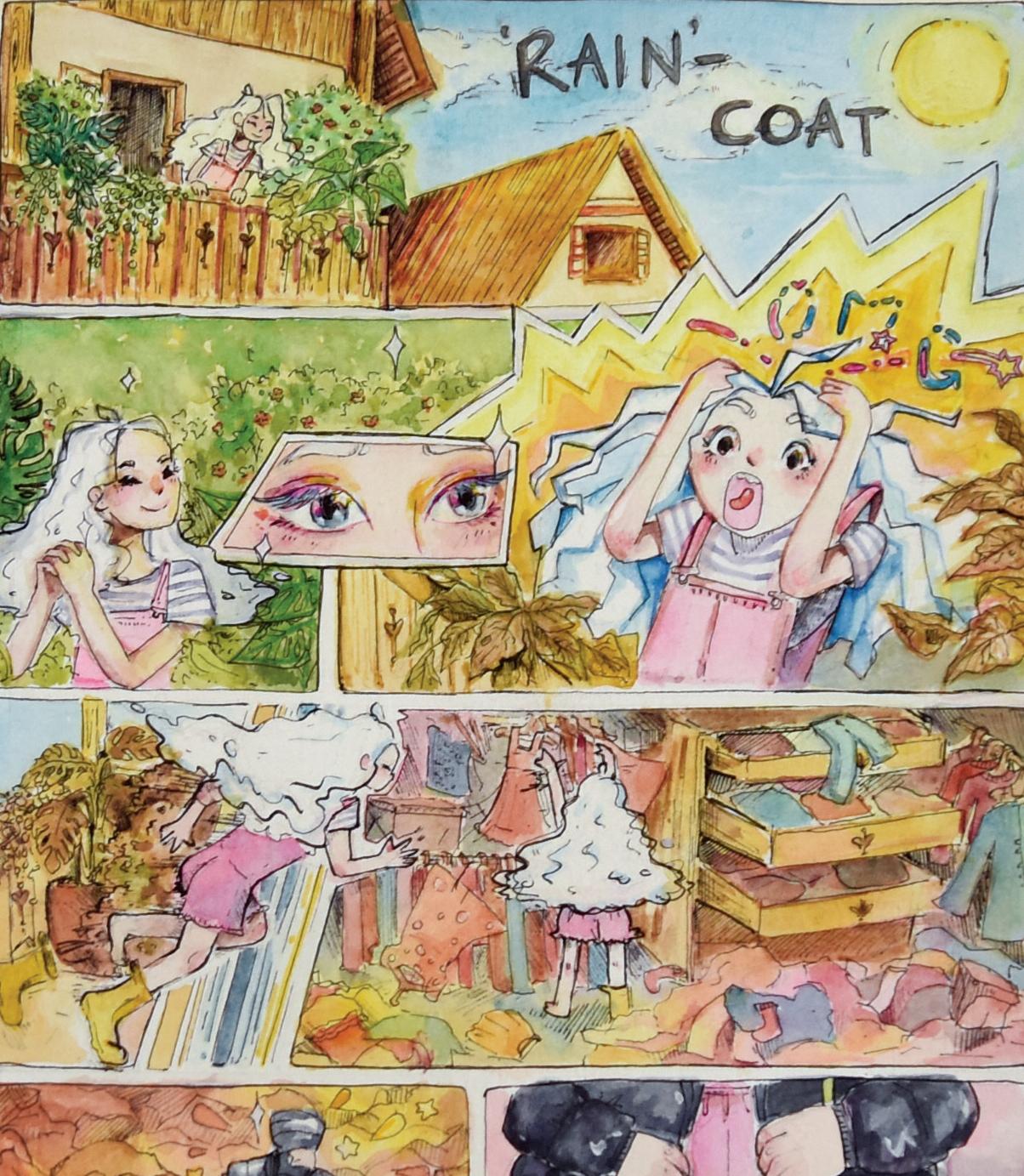

white gel pens used to add dimension into pieces
alochol based markers that are easily buildable and layer easily easily portable watercolors used for sketch and illustration
“I started when I was younger and never really let go of it. I got more serious about it in high school because I was freaking out about a future career. “
“I started when I was probably two or three because my dad is an artist and we already had art supplies around... I just never really stopped.”
“I’m the opposite of [Clover]. I almost always have an idea, and then I make a bunch of sketches, and refne them. I do this so I can make just one piece. “
“Most of the time, it’s a mess. I just start... there’s a lot of switching things around. I’m not very organized in my art process, it’s a lot of chaos.”

I really like watercolor. It’s the frst medium I really got into and I stuck with it. It can be super detailed or super fuzzy.
I have always drawn. I love drawing... I also like to sculpt because it never turns out how you expect.
Seniors Clover Tyler and Jade Achen are close friends whoseTHEN-EIGHTH-GRADER Annabelle Reda spent her quarantine behind the sewing machine. Starting off with a costume for the local Renaissance festival, her love for making clothes has only grown.

Now-junior Reda started making costume-like clothing as a fun hobby and spent her free time creating all kinds of skirts and blouses that could be used in different costumes in the Renaissance fair. She also works at the Nelson on the teen council helping to run the teen events, allowing her to view paintings and art that portray clothing and styles that are very unique in the modern day.
“I enjoy doing costume stuff more because there’s something about it that makes it a little more fun,” Reda said. “You can’t wear it everyday, it’s unusual.”
While keeping a lot of yarn for knitting and crocheting, she also uses materials such as satin and chiffon. A lot of her materials come from Scraps KC — a craft reuse center — as it’s cheaper than buying fabric and better for the environment.
When she’s not making pieces for herself, she makes things for her sisters and does thrift flips for friends. She’s also helping to make the fairy costumes for senior Grace Fields’ upcoming musical, “Reverie.” The costumes are a romantic style and ballet
story by isabel baldassaroinspired and are being made with satin, tulle skirts, chiffon, lace and lots of texture so that they stand out to the audience when watching the people on stage.
“You want [people] to be able to look at [a costume] and see all the details even from so far away,” Reda said.

One of her favorite pieces she’s designed so far is a 1920’s-inspired green dress for a ball at the Nelson that she made in four hours the night before.
“It turned out really nice,” Reda said. “It was really unique and I haven’t really made anything that fast.”

IN HER EIGHTH grade sewing class, senior Marin Bryant spent her time at the sewing machine working hard on her first project.
A little 20-by-26-inch pillowcase sparked something Bryant didn’t know she had in her: an urge to create. She wiped off the dust on the dull white sewing machine at her house a couple weeks later and got started.

“I have the resources, so why not?” Bryant said.
While the class taught Bryant the basics, she often relies on her own DIY skills or her grandmother’s advice
for help when she’s stuck.
After practicing by making small bags, pajama pants, pillow cases and scrunchies, Bryant took on her biggest project so far — crafting her own Sweetheart dress. Using Joann’s turquoise fabric and thread, Bryant is re-teaching herself how to work with a pattern since she normally creates her dresses from scratch.

“I’m relearning things I’ve forgotten since I haven’t used patterns since eighth grade,” Bryant said. Normally her projects are smaller, altering old clothes or thrift flips.
She’ll shop at City Thrift, Savers or Salvation Army, looking for different pieces to upcycle.





“I will go to the thrift store and buy something purely because I think I can alter it,” Bryant said.
Most of Bryant’s projects include cropping pieces of halter tank tops — grabbing inspiration from Depop or Pinterest.
“I like to shop on Depop to see cool clothing and see what I could change or what I can learn from the pieces on there,” Bryant said.
SENIOR ABBY STEIN started sewing at the age of seven — for her dolls, of course. After making dresses for her American Girl dolls, Stein got a sewing machine for more lifesized projects.
“Eventually the amount of clothes I was hand sewing convinced my parents to get me a sewing machine,” Stein said.



Stein took a Joann’s sewing class in fourth grade and built on the basics using pattern books and apps such as TikTok and YouTube to get more tutorials and tips.
Stein has an eye for fashion — whether it’s a dress in the thrift store that has serious potential for altering or an expensive piece online that she could recreate for hundreds of dollars less. She often goes to thrift stores
such as Blessings Abound and Savers to find things for her pieces when she wants a break from the hard work of sewing clothing pieces from scratch.
“I do like to upcycle clothes to be able to alter them,” Stein said. “It just makes thrifting a lot more of a creative process.”
Stein also likes to look out for cheaper fabrics at thrift stores and second-hand websites, such as Fab Scrap, since it can be expensive to buy fabric frequently, and even uses her creativity to see clothing pieces in other fabrics like a bedspread.
“It really just depends on the piece I’m needing to make,” Stein said. “So like when I buy something at a thrift store, I’ll have it and then I’ll see a project and be like, ‘Oh, that’s perfect for that.’”
According to Stein, she can easily spend

a lot of time working on different projects. Long processes like hand sewing allow her to appreciate the people who work in manufacturing and make clothes by hand all the time.
“You start to appreciate how hard it is to actually make clothes,” Stein said. “Most clothing production is not automated, like manufacturing still happens by hand.”

While she enjoys making pieces, she says they can take hours, days or even longer. One of her biggest projects was a fringe dress that took around four months to complete.
“My advice to anyone who wants to sew is that it’s hard and frustrating,” Stein said. “I think people make it look easy but you’re going to get frustrated. But don’t let that burn you out.”

See June’s 2022 recap of fan statistics from Spotify
41,810
listeners
601,039 streams
022 EAST ALUM June Hyde spent her quarantine on her floor writing indie pop songs on his off-tuned guitar. Her little sister, junior Greta Hyde, is used to the noise reverberating between the paper-thin walls of their bedrooms.

2
Greta was used to it, as she’s basically grown up at the Lawrence Replay lounge and has been surrounded by June’s music her whole life. June’s 18,590 monthly listeners hear the same tunes released under his artist name, June Henry, streaming on Spotify.
June pours her multifaceted soul into his lyrics as a form of catharsis, according to her friend, senior Tatum Aikin. Music is June’s artistic outlet, allowing for unrestricted self-expression describing her life as a self described “boy-girl” — and Tatum and her other fans hear that.
June has recorded and released three albums for a total of 38 tracks that feature acoustic voice memos edited on Garageband. For June, songwriting evolved from a quarantine hobby into a daily routine, and she now writes at least one song a day.
“I would not be able to function on a day-to-day basis without what I do,” June said. “If people asked me how I can write so many songs, my question would be: ‘How could I not?’ Because I would honestly explode and die. I’ve been without my guitar for stretches of time before and like had genuine mental health crises. I cannot handle it.”
June’s professional career started in March of 2022 with a 13-song album inspired by the teenage heartaches and boosts of estrogen that comes with medically
transitioning from male to female and back again over four years. The nights of the sickness that come with transitioning and detransitioning birthed “Class Pet,” June’s very first published project. Themes of uncertainty surrounding gender identity, fear of the future and feelings of unrequited love echo in each voice-memo-recorded track. It was a period of vulnerability for June — the early stages of questioning her gender identity, her own queerness and the future.
“It’s also showing me that it’s really powerful to be visible like this, specifically with queerness,” June said. “The way that people interact with my work that’s about gender and sexuality is so meaningful to me. Like, I’ve gotten so many inspiring messages and made so many friends through my music [as they] finally feel like they can relate too.”
After “Class Pet” dropped, June’s now-professional career gained momentum. His fans reached out on Instagram and TikTok for more songs with lyrics that reminded them of their own struggles. After “Class Pet,” he realized his fans weren’t looking for polished-professional tracks — they just wanted music they could relate to.
“Music about not being a boy or being a girl or very aggressively being both a boy and a girl isn’t really out there,” June said. “So it’s a very under-saturated market. So if you have a song that you vaguely like that’s about being trans and you’re a trans person, you listen to it over and over.”
A lot of June’s fans are fellow trans people, who, like June, use music as an outlet for expressing themselves and their identity. Some fans are even inspired by June’s tracks to sing covers or tangible art pieces like drawings, poems and clothing patches.
“The first song that I really wrote
and cared about, ‘cure all,’ was about being trans, but also about the idea that transitioning wouldn’t cure every problem in my life,” June said.
“Like that it’s not a ‘one size fits all.’”
June’s next album was a mesh of nine songs from the more playful and lighthearted times of 2022.
“Somethingfriend,” a 14-minute album, includes a song about the emptiness non-binary people can feel as they can’t fully relate to one gender or the other. The song, titled “void-adjacent,” hit 100,000 streams on Christmas Eve.
June responded by texting her family: “Guys, ‘void-adjacent’ just hit 100k. Life is crazy.”

June’s fans, or the June Henriators, tag June in covers of themselves singing “void-adjacent” or figuring out how to un-tune their guitars like his. But “void-adjacent” specifically has reached more people than June ever imagined, with now over 18,590 monthly listeners.
June is trying to keep up with her music and is releasing her new project, “the light i choke down,” on Feb. 14 — featuring a chronological order of events with his most recent misadventure searching for a companion.
As he finds more success in songwriting, June wants to continue learning about music and the production process but still wants to keep her un-tuned guitar and voice memo recording style to keep it real — like she always has. June descried the June Henriators as a young group of trans people who are creative, queer and would be his friends in real life.
“I get messages like every day at this point that are people telling me that my music has helped them with some aspects of their identity,” June said. “Which is insane to read things like that and to be like. ‘Something that came from my suffering has helped other people hurt less.’”

INSPIRATION STRUCK.
The thrumming beats, loud vocals and hardcore lyrics of “Stick” by JID and J. Cole caught junior Isaac Anderson’s attention within the first 10 seconds of the TikTok he was watching. He quickly swiped out of TikTok and opened his Notes app, typing the title at the bottom of his endless list of songs he may sample for his upcoming East basketball hype video.
Isaac began filming and editing sports hype videos at the beginning of December. Since then, he’s racked up pages of potential songs to use for his videos. He’s made 12 so far, which he posts on his Instagram account, @isaac.anderson for his 1,067 followers to see. It’s now solely dedicated to basketball videos.
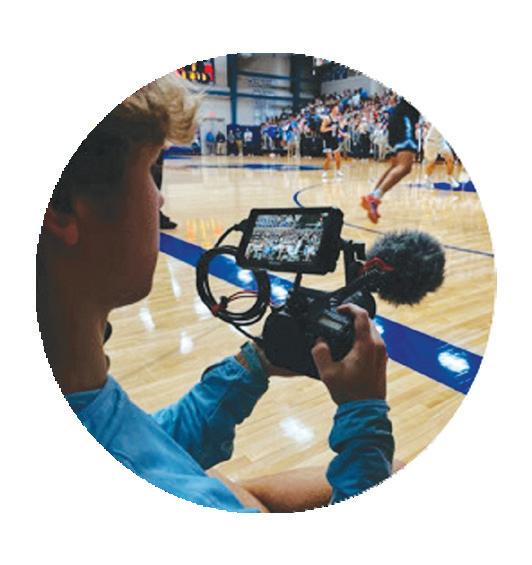
“As a kid, you always want to be a star athlete and at the center of a crowd,” Isaac said. “With filming, you’re not actually playing that sport, but you’re still in that environment, which I love.”
Isaac has always been creative, reselling sneakers in middle school and making Fortnite edits to post on his YouTube channel. But Isaac’s short-lived hobbies didn’t match his passion for filming.
said. “I’m normally editing for four or five hours just to put up a one-minute video.”
Isaac began with a brief stint in photography, shooting football games and playing with filters in Adobe Photoshop. He was inspired to make videos after rekindling a middle school friendship with junior Calen Domingues, more commonly known as Calen Films.
“This fall when soccer was [happening], I reached out to him and told him I loved what he was doing and I wanted to try it,” Isaac said. “He told me to come out to the next game he was filming and was super supportive.”
That first soccer game sparked a close friendship between Isaac and Domingues. Aside from carpooling to sporting events and filming side-by-side on the court, they shoot hoops at Sylvester Powell Community Center and dine at Chick-Fil-A.

AS A KID, you always want to be a star athlete and at the center of a crowd. With flming, you’re not actually playing that sport, but you’re still in that environment which I love.
“This is the most passionate I’ve seen him about something in a long time,” Isaac’s mother Brooke Brundige said. “He’s always showing me his videos and other peoples videos, he’s always looking to see what’s out there.”
ISAAC ANDERSON
JUNIOR
Isaac usually arrives at games an hour before tip-off to set up his camera equipment and get warm-up shots of the team. As the starters rush into the court when their names are announced, Isaac tracks the players for slo-mo clips and close-ups.
Then he scopes out a filming spot. Under the basket, in a corner or across the student section are his go-tos, but he likes to switch it up every quarter or so.
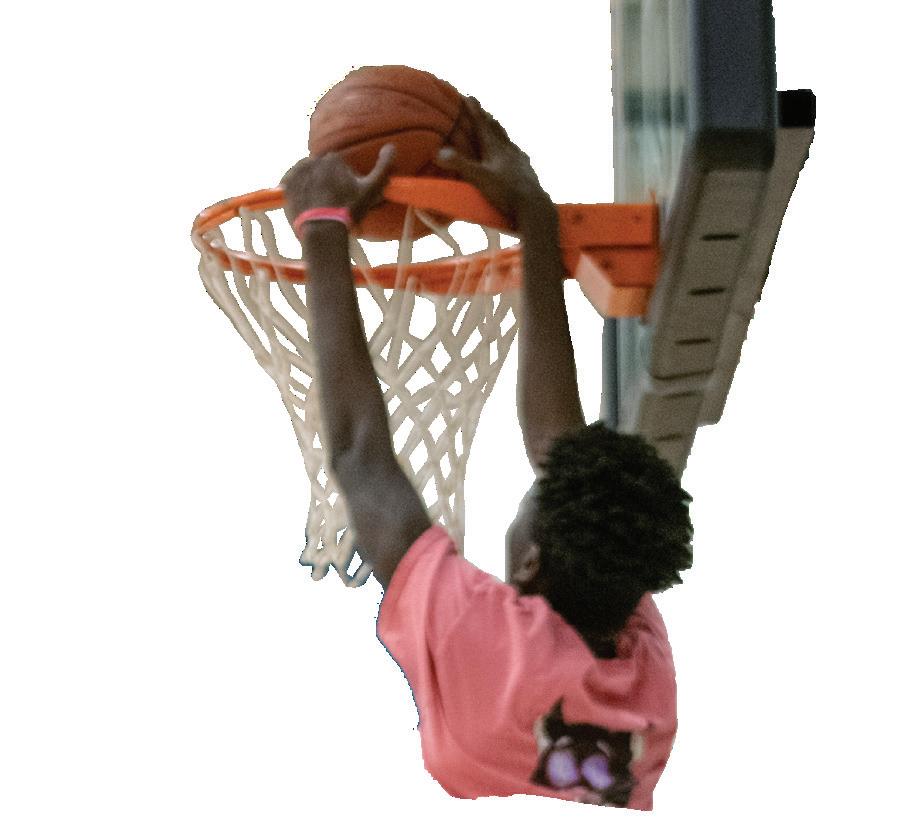
But that’s just his filming process. Afterwards, he goes home and sifts through an hour and a half of footage, splicing clips and adding effects.
“I don’t think people realize how hard it is to put up one or two videos a week,” Isaac
“People think that we’re rivals,” Domingues said. “I’ve gotten asked that multiple times, but realistically we are best friends. We hang out almost six times a week.”
Domingues noticed Isaac’s talent right away. He credits Isaac’s confidence. According to Domingues it was “through the roof” for a beginner. Using his editing skills from his Fortnite montages, Isaac created his first East video when they played F.L. Schlagle High School — a 40-second compilation of three point shots and roaring student sections. It received over 3,000 views in the span of a week.
“Whenever we walk into a gym before shooting a game, he always walks up and just starts talking to the players, sparking up conversations with everybody,” Domingues said. “I never did that when I first started. It’s Isaac’s kindness and helpful advice that’s boosted his success in the film world.”
Now, the two feed off of each other, seeking feedback and promoting each other’s videos.
“I’ve told him how to capture better shots, better places to be in order to capture a moment, how to have faster cuts in a video and how to make sure the song really matches the vibe of the video,” Domingues said.
Isaac is already looking for a way to turn this hobby into a career. He receives messages on Instagram from athletes offering to hire him, and he plans to pursue film in college.
“There’s so much I want to accomplish in the future,” Isaac said. “I want to film K-State, KU, KC Current, those are all goals that I want to achieve, but right now I’m just getting started.”
How junior Isaac Anderson got inspired to start filming basketball editsROM-COMS BOOKS
Movie: At Midnight

Where to Watch: Paramount + Rated: NR Release Date: Feb. 10
Movie: Shotgun Wedding


Where to Watch: Prime Video Rated: R Release Date: Jan. 27
Movie: Your Place or Mine

Where to Watch: Netfix Rated: PG-13 Release Date: Feb. 10
Movie: Somebody I Used to Know

Where to Watch: Prime Video Rated: R Release Date: Feb. 10
Valentine’s Day Mix
Valentine’s Day music picked by East students
TheHarbinger
Happy Place by Emily Henry

Genre: Romance
Pages: 400 Don’t Open the Door by Allison Brennan Genre: Mystery Pages: 384

Yellowface by R.F. Kuang

Genre: Satire, Humor
Pages: 350 The Light Pirate by Lily Brooks-Dalton

Genre: Science Fiction Pages: 357
40 min
Marry You Bruno Mars

Love Story Taylor Swift
Love You Like A Love Song
Selena Gomez
Love On The Brain Rihanna


Godspeed Frank Ocean

love. Kid Cudi

Love Is Only a Feeling Joey Bada$$

Let Me Love You Mario
Lovefool

The Cardigans


 story by mary gagen
story by mary gagen
1
Spending Valentine’s day by yourself promotes self-love and the ability to spend time alone SELF-CARE





ON VALENTINE’S DAY, the assumption is that love is shared with a special partner, love or admirer in your life. It’s a holiday celebrated by coming home to a dozen fresh roses and a box of heart shaped chocolates sitting on your doorstep with a note detailing their undying love for you.


But this year, I’m switching things up. My special someone is especially close to my heart — me.




Galentine’s Day parties or romantic dates are lovely and all, but without failure, it’s my own heart who’s been there for me no matter what. It’s my strength that gets me through hard days, my passion that keeps me reaching for my goals and my joy that lets me smile at all of my favorite people in the hallways. And who better to spoil on the day of love than the one who loves me all year long?
My first call whenever I need a serotonin boost is Bijin Salon and Spa. Something about walking in and being offered coffee with a smile sets the tone for the day. Receiving a head massage while chatting with my stylist about whatever might be going on in my life always takes the weight off my shoulders. Ranting to a stranger who has no reason to share anything I say is oddly cathartic.
Even though I’m able to vent to friends, family or hairdressers, sometimes I just need a day to love myself, by myself. I’ve noticed that taking the time out of my day-to-day life to take care of my body and my mind helps me maintain a positive attitude when challenges arise.
Finally getting a little trim and shaping to feel like a brand new gal is uplifting. Call me basic, but you can’t tell me that a little TLC for your locks isn’t refreshing.
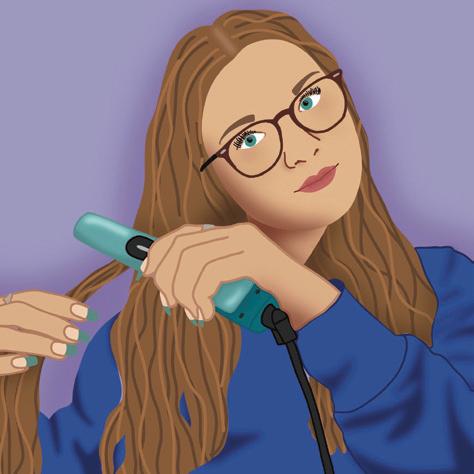
While these self care activities tend to improve your appearance, that’s not all they’re good for. Self care becomes most important when things aren’t so easy. Taking care of yourself physically is often the best tool to recharge yourself mentally. My solotines day isn’t just a day to pamper myself, it’s a day to love myself however I might need it.
Next on my self-care todo list — a manicure. I head to my favorite nail salon, Nail Perfection & Spa. A nail appointment generally means an hour and a half to think to myself. Many teenagers may find unfilled silence awkward but it’s a necessity for me. Being able to sit with yourself and process any emotions — big or small — is a life skill.
with my hair in a messy bun. My goto is coffin shaped nails with french tips — sometimes even little floral designs. With a clear mind and pretty fingernails I can conquer the world. But when all else fails, the little flowers on my ring fingers always make me feel better.
After two appointments, I’m exhausted. My iced coffee can only do so much, so I head home for my next appointment — with my bed. Following my glorious nap, it’s face mask time. My personal favorites include Que Bella lavender calming masks, charcoal masks or lip masks from the local Target. Everyone in my immediate family can attest that I look quite quirky in my various masks. The doubled-up clear sheet and sparkly gold lip masks are certainly a sight to see
IT’S MY STRENGTH that gets me through hard days, my passion that keeps me reaching for my goals and my joy that lets me smile at all of my favorite people in the hallways. And who better to spoil on the day of love than the one who loves me all year long?
Despite how silly I look in the moment, taking care of my skin is something I know I must do to feel like my best self, and face masks are such a fun way to do it. They make me feel rejuvenated. By hydrating my skin, I choose to empower myself — even if it’s just something small.
Yelp’s best salons and spas for hair, nails and face masks

TOP PLACES
SOPRA SALON
STEM HAIR & BODY

TOP PLACES
On the other hand, having my nails done always makes me feel more put together — even if I’m in a sweatsuit
This Valentine’s Day, loving myself is my top priority. Whether it’s a hair appointment or relaxing in my bed while watching Criminal Minds, treating myself to days like this are what keep me going.
TOP PLACES
FOUNTAINS, BARBEQUE, Patrick Mahomes – the first three words to come to mind when I think of Kansas City. But one word is missing: color. Driving downtown, I’ve always turned my head at the bright murals that pop out against the old, dusty buildings in Kansas City.

They stand for more than their face value, depicting themes of Kansas City history that many have yet to explore. By diving into the history depicted in the murals around Kansas City, I aimed to explore our hometown’s vibrant culture.
The Avenue of Murals – a collection of streets in the heart of downtown – is home to over six murals, and I visited three of them.
The first stop on my tour of The Avenue of Murals was to Wyandot Echos by Duane Dudley, Joe Faus and Alisha Gambino on 636 Minnesota Ave.
The mural is a visual representation of the Wyandot Nation’s journey across the country in 1843. After being forced to leave their hometowns, their people traveled by Steamboat to Kansas City. As each Wyandot clan migrated they formed Kansas City,
Kansas, according to kansasstatehistory. com.
Stretching diagonally across the mural is the Kaw River – connecting all the elements of the mural. The top right corner features a Wyandot Native American, looking toward another Native American floating down the river. This simple artistic detail made me realize that these were real people forced to move across the country.
What stood out to me was the mural’s largest element: a sea turtle. I was a little confused at first considering Kansas City has a non-existent sea turtle population. The turtle’s shell is formed by a mountain landscape – representing separate Wyandot clans such as deer, bears, frogs and fish. The turtle was on the mural to represent and display each clan making their journey and once again add a more personal touch.

Making my way down the Avenue of Murals, I made my next stop at Joe Faus and Alisha Gambino’s El Baile de la Vida, which translates to “The Dance of Life” in Spanish, on the corner of 826 Minnesota Ave.
El Baile de la Vida is an illustration of a lively Mexican party including people from all decades dancing Folklórico – a personal
and connective Mexican dance.
Scattered throughout the mural are familiar images of skeletons from Day of the Dead – a common occasion for Folklórico dance. People are seen dancing with their family, swaying their dresses and making music to celebrate the occasion.
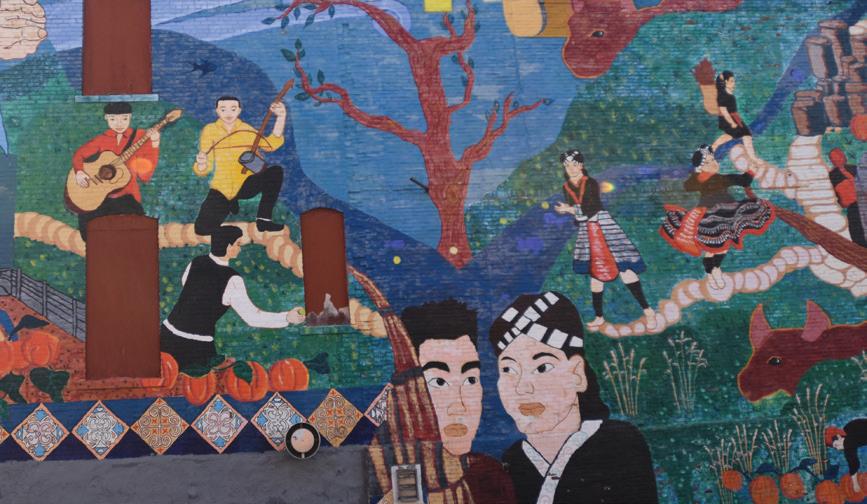
El Baile de la Vida felt more approachable than the others to me – maybe it was the younger children painted on the mural or the recognizable symbols. Either way, it caused me to pause and take in the mural for longer than the other ones I toured.
This mural is not only a tribute to Folklórico dance but also a way to display the importance of family and celebration in Mexican culture. On the same street as El Baile de la Vida are Quinceañera dress shops for fifteen-year old girls to look for a special gown to celebrate her shift to womanhood.


The atmosphere added more to my experience – mariachi played in the neighborhood streets giving life to the characters in the mural. It made me almost feel like part of the scene, I could imagine the 2D people swirling around me to the beat of the mariachi music. It was exciting to feel immersed in the mural.
The last stop on my tour was to Dawning of a New Day by Joe Faus and Alisha Gambino at 1207 N. 7th St.
Dawning of a New Day represents the value in generations in the African American community through depicting traditional African culture on the left side and modernday African American leaders on the right.
The traditional side depicts people dancing with their hands in the air and eyes closed, as well as people playing musical instruments such as guitars and maracas.
On the modern day side, American civil rights activists such as Harriet Tubman and Martin Luther King Jr. are depicted on the mural. The art style made it easier for me to recognize these leaders.

The mural illustrated Kansas City’s strong African American history completely.
The Avenue of Murals taught me that color in Kansas City doesn’t only stand for the beautiful murals painted on downtown buildings but also engulfs our culturally rich and historical environment. It paints the vibrant picture of American and Kansas City culture that we all must not forget.
An exploration and review of the city’s murals that help explain Kansas City culture
Taco Hangover’s tacos aren’t worth the hype, but the “Hangover” items are worth the try


I’LL ADMIT I don’t get out of my comfort zone when going to new places — I prefer to stick with Chipotle instead of venturing out to new mexican restaurants, but after hearing about Taco Hangover, a small quiet restaurant in Shawnee, I hopped in my car and headed to W 63rd St and Shawnee Mission Parkway.
Walking in, I noticed that the restaurant looked cramped with only two tables shoved in a corner. But the clean, simple aesthetic and bright neon signs throughout the interior made up for the lack in size.
The menu is versatile and packed with tons of options — more than just the traditional burritos and tacos. It has 13 different types of tacos and four hangovers — an added entree which, compared to the others, was packed with more ingredients, with added spices and cheese. The menu was surprisingly extensive considering the size of the building, it was as good in length and had many versatile options.
It wasn’t my favorite taco, leaving my taste buds slightly unsatisfied from the mound of lettuce combined with chicken. You’re better off going to Chipotle to satisfy your taco needs.

Next I tried the carnitas tacos — which was underwhelming. Made with carnitas, onions and cilantro, it was a boring taco with more charred than pull-apart carnitas and the small diced onions. I did appreciate the consistent ratio of toppings to carnitas, but there was nothing great about the non-juicy meat and the two singular toppings that made up this taco. Though the cilantro added a nice touch to the onions and dry carnitas, the taco could’ve used a sauce to add moisture to the dry fillings.
THE SMALL restaurant with just two tables shoved in a corner originally looks cramped but, the little restaurant is packed with cute bright neon signs and a clearly clean, simple aesthetic.
The colorful decor hints to the bursting favor in the food.
After much back and forth, I chose the classic fried chicken taco — with breaded chicken, lettuce, cheese and tomato. The “fried” in the name might be a little of an exaggeration for this taco as the coating on the chicken was average and could honestly be swapped out for a chicken nugget and I wouldn’t be able to tell the difference. But nonetheless, it was covered with different toppings which sometimes overpowered the chewy chicken pieces.
ingredients, with queso and oaxaca cheese, sour cream, refried beans, cilantros, green onions, pico de gallo green chili pork and pickled jalapenos giving this dish a nice kick. This was often the case for many of the items on the hangover list which was expected with the increased prices for the hangovers. For only $10, this is definitely worth the money with how this dish compares to the others with the added juicy pork and extensive leftovers.
Gracie’s ranking of their signature “Hangover” products
While the tacos were underwhelming, the hangover items left me wanting more, with noticeably more ingredients and effort put into them. I’d drive back for things like the hangover nachos, burritos and fries — each lived up to the restaurant’s name.

Fries are definitely not a goto at a Mexican place, but they are a must have at Taco Hangover.— Packed with lime juice, onions, spices and a big mountain of cheese. There was something in every bite coming with this huge bowl, with the endless amount of toppings and dressing that came with it along when eating the fries, you get a nice citrusy cheese flavor. I was thoroughly pleased after the mediocre dry tacos.
The hangover nachos packed in many
My favorite was the hangover burrito. I’m always hesitant to get a burrito, as I don’t like when it falls apart, but this was not the case. Pineapples and pepper made the burrito shine compared to the predictable tacos. As you tasted the burrito sauce in every bite, it definitely stood out from the other that I was used to having here.
The final hangover item I tried was the rice. This plate is a nod to a more modern Mexican style rice with fajitas, chicken and queso on top. I specifically enjoyed the added taco shells on the side. Plus the large portion makes it ideal for sharing.
My total came out to $43. My plates were generous enough to leave three nights of leftovers for my family — just enough to avoid another trip to Shawnee for a few weeks before I start craving another hangover burrito.
pork carnitas, roasted pineapple, vegtable slaw, boom boom sauce
red rice, fajita mix, white queso, chicken, tortillas
queso, refried beans, green chili pork, jalapenos, pico de gallo, green onions, sour cream


fries, queso, pico de gallo, cojata cheese, lime crema, salsa diablo





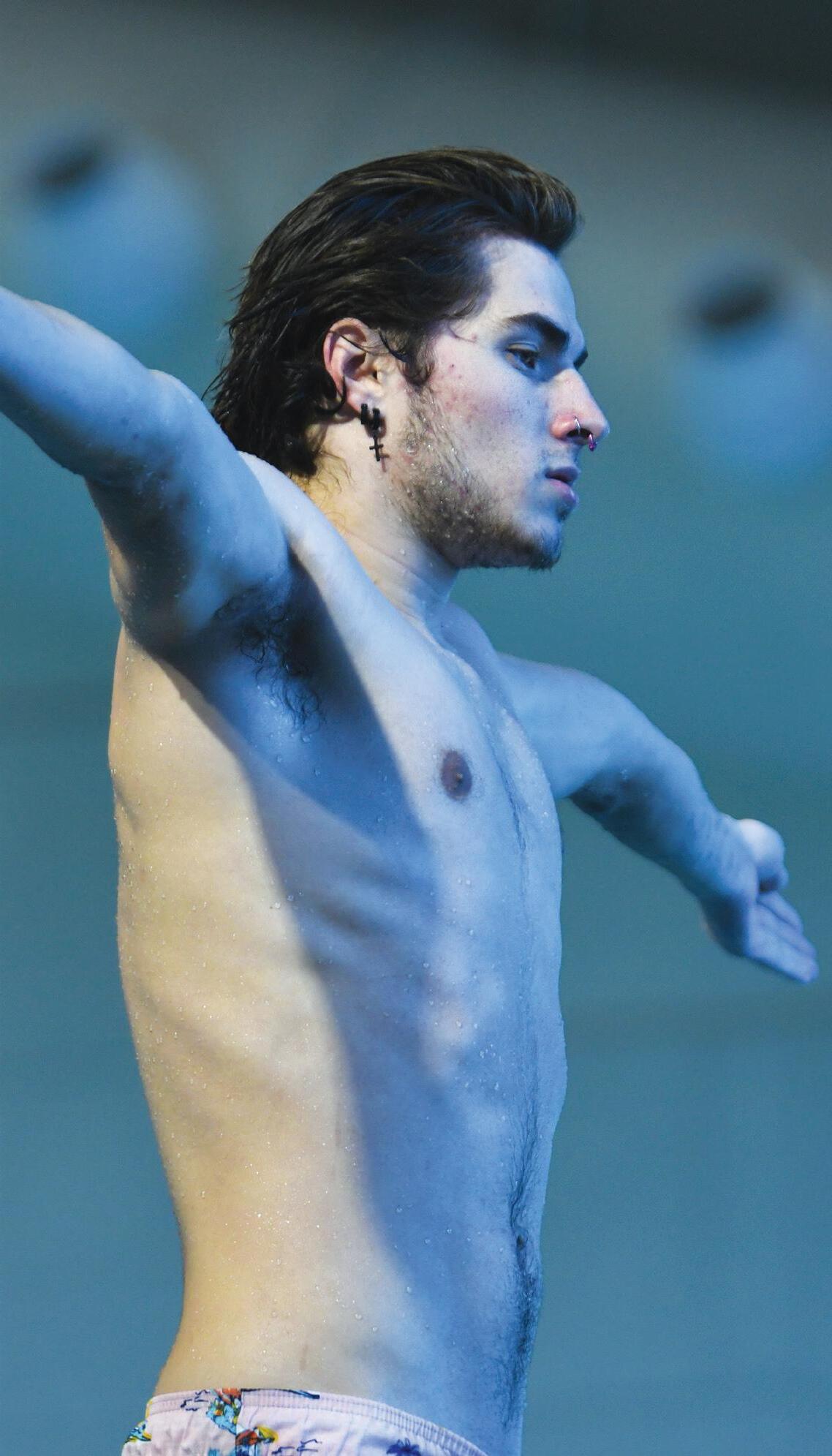
A look into East’s sports the past couple of weeks

Updates, schedules and pictures from the winter sports season so far Students thoughts on local college’s current basketball rankings and the season ahead

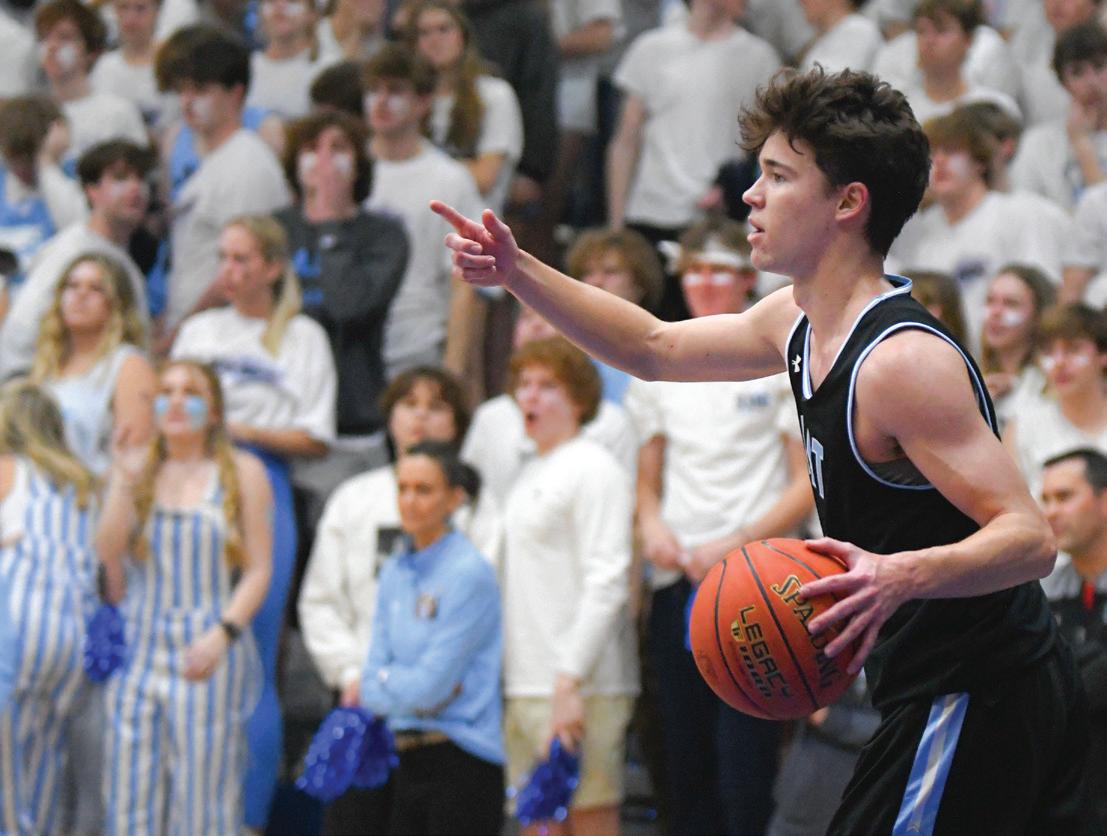

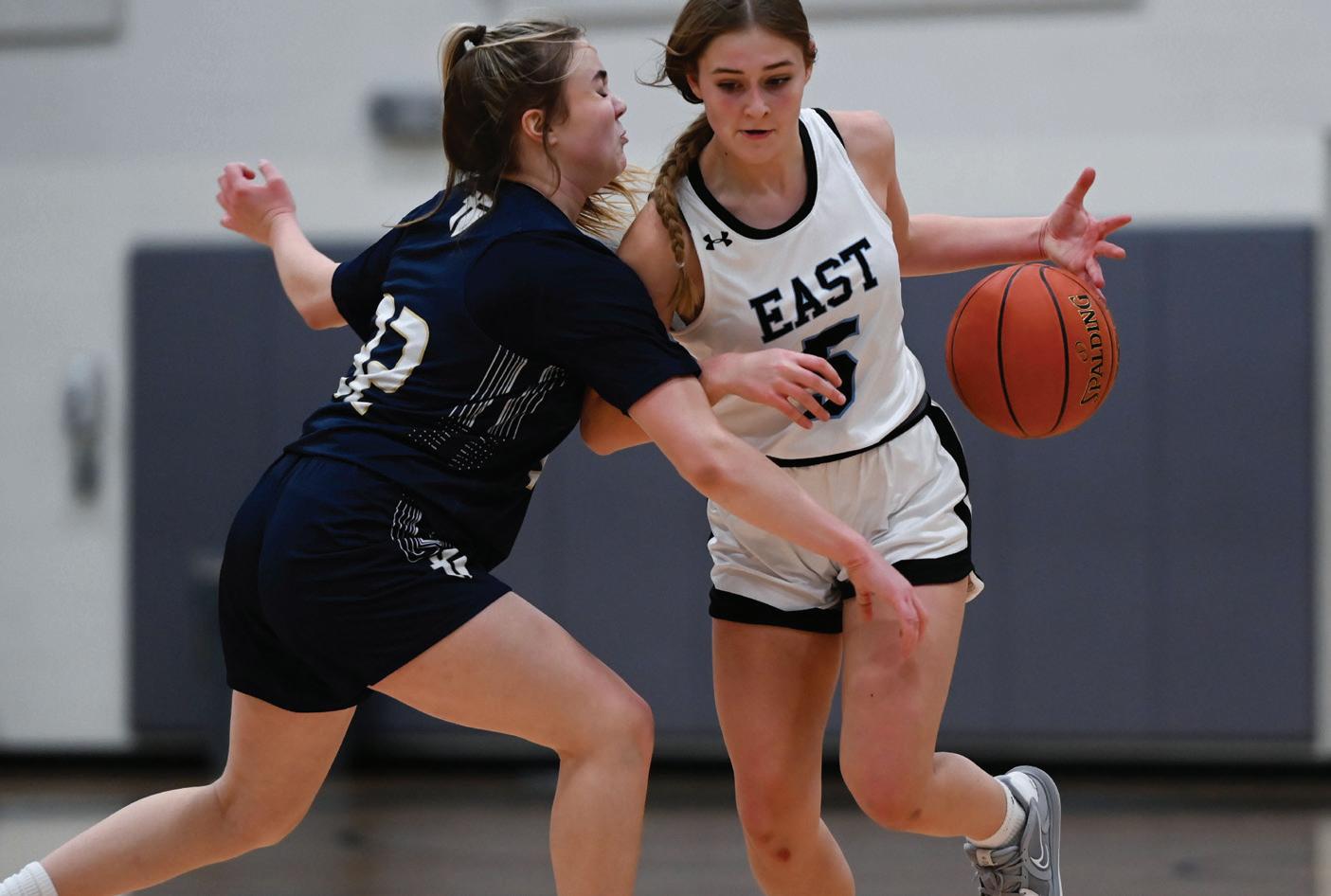
#9

SOPHOMORE
I THINK THE rest of the season will be pretty solid. I think we could make a deep run in the tournament, but it’s unlikely.
#5
WILL BECK


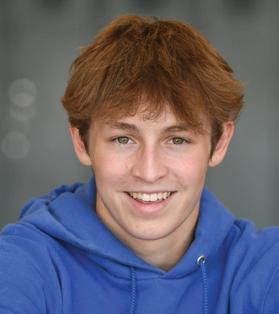

SOPHOMORE
I THINK IT’S amazing. We’re ranked #5 because we only have two returners and a whole new coaching staff. I think we will have a good season and go far in the tournament.
#10 #7
SENIOR
ARKANSAS HAS A better roster than almost all SEC teams. I have no doubt they’ll turn things around and go deep into March.
SENIOR
AFTER THAT WIN against Iowa State, I think the team will start to play a lot better with more confdence. I think they’ll end up being a pretty good seed.
PEOPLE TOLD SOPHOMORE
Sylvia Mohrstring to quit.
“It’s not worth it.”
She was one of two girls who showed up to the first wrestling practices. It was hard — still is. Muscles she didn’t even know existed were sore when she showed up for that first week. Though out of her comfort zone, she immediately fell in love with the culture and friendships she was making in the sport.


Out of 39 wrestlers, Sylvia and sophomore Abijared Contreras are the only girls on the team. Throughout their two-year wrestling careers, they’ve dealt with judgment from coaches and others in the East community but are overall proud to be female wrestlers.
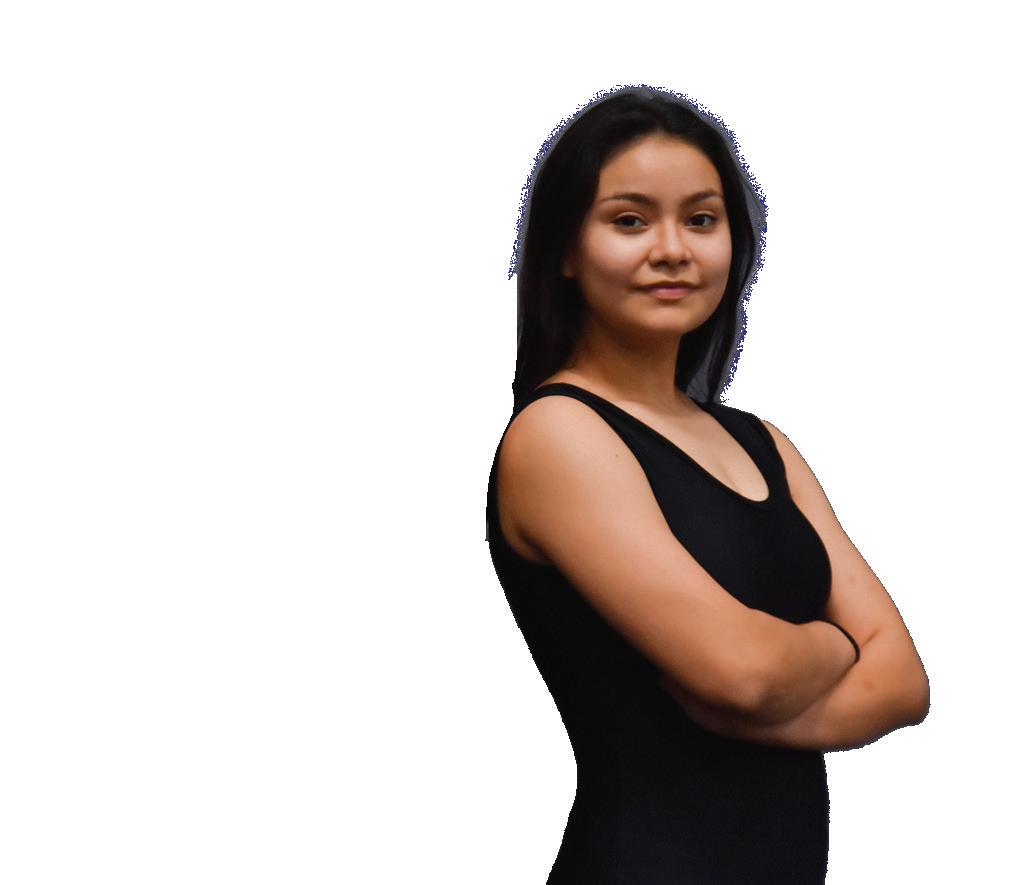
Sylvia’s wrestling career began at the beginning of her freshman year — a late start compared to others on the team who have wrestled for two years in middle school. She wanted to try out a contact sport like football, but her mom said no. So wrestling was a good second choice — as she’d seen it before, and it looked fun.
Abi started when she was in seventh grade after watching her three older brothers wrestle throughout high school her closest brother being two
time state champion Jahir Contreras. One informational meeting about joining the team, and she was sold.
Abi’s main draw to the sport was the friendships made at practices and competitions.
“I think the friendship you make in wrestling, it’s like a lot different than any other sport,” Abi said. “Because in wrestling, you’re in each other’s faces.”
But Sylvia is frustrated that her gender gets in the way of her improvement. Her coaches are often afraid or uncomfortable to come up and get physical to help teach her the moves like they do with the boys. She believes that she should be treated just like the guys and they should get closer to her without feeling uncomfortable.

“It annoys me so much,” Sylvia said. “We understand that, obviously, it’s different. But, especially in our first year everyone was like, ‘Oh my God, there’s a girl in the wrestling room’.”
Abi is frustrated by the lack of girls involved in the program. If Sylvia misses a practice, Abi has to wrestle one of the boys, or worse: doesn’t get to wrestle at all that day.
But despite all of the hardships, they both work through their frustrations and come out with a positive outlook that keeps them involved in the sport.
girls are forced to stay back from certain events
coaches seem less comfortable to help them practice moves
For Abi, it’s her family and their support that keeps her in it. She also loves the friendships that she’s been able to build with the team and coaches while at practice and meets. She also loves how different wrestling is compared to other sports and the challenges that come with it.
Sylvia similarly finds motivation through the support from her family that she is always getting and continues to push her through everything she does to become a better wrestler.
“We’ve been super excited about it,” Sylvia’s dad Ian Mohrsting said. “She’s seen a lot of progress. And she’s always been a go-getter, so she’s put a lot of work towards it and she’s really eager to learn about it, and put in the time and effort to kind of grow in the sport.”
The girl’s names, grades and wrestling histories

Differences in the ways the girls are treated compared to their male teammates
It annoys me so much. We understand that, obviously, it’s different. some days the girls can’t wrestle at all SYLVIA’S PARENT
feel excluded from team activities at times
SOPHOMORE
SYLVIA MOHSTRING
She’s always been a go-getter, so she’s put a lot of work towards it and she’s really eager to learn about it...
INHALING SHARPLY, FRESHMEN Reese Erickson and Abby Hunt step onto the low green diving boards in front of them, swinging their arms before falling into a pool of foam blocks.
They started off on diving boards — Hunt starting at nine years old and Erickson at thirteen years old turned into weekly practices during the fall and winter. Erickson decided to start diving after years of swimming and realized how much she enjoyed it. They both fell in love with the work that goes into diving, the technique, the trial and error and the success of it all.
Once a week, Erickson and Hunt sit through an hour-long car ride to the University of Kansas campus for their dive practice, starting in the gymnasium to warm up before heading to the pool.
“There is a big importance of dry-land practice for diving because you just automatically think of water for diving,” Hunt’s mother, Amy McAnarney said, “But I especially think the KU program has such a big emphasis on the dry land warm-up.”
Dry-land is a way to start off land before getting into the water — a board is used above a foam pit to rehearse the motions of a dive.
At practice, Hunt and Erickson’s top priority was their form and how the practice dives would convert into their meets and future tryouts. Their focus was on one dive at a time to create the correct motion while on the board. Hunt improved the most on her inward
flip and her reverse dive.
“It’s definitely a commitment,” MacAnarney said. “But it teaches the athlete to be good at a sport, you have to commit.”
A typical practice at KU consists of an hour of dry boards practicing dives like flips and back dives. The next 30 minutes were spent on a three-meter board practicing what they’d done in their warm up — except now in the water.
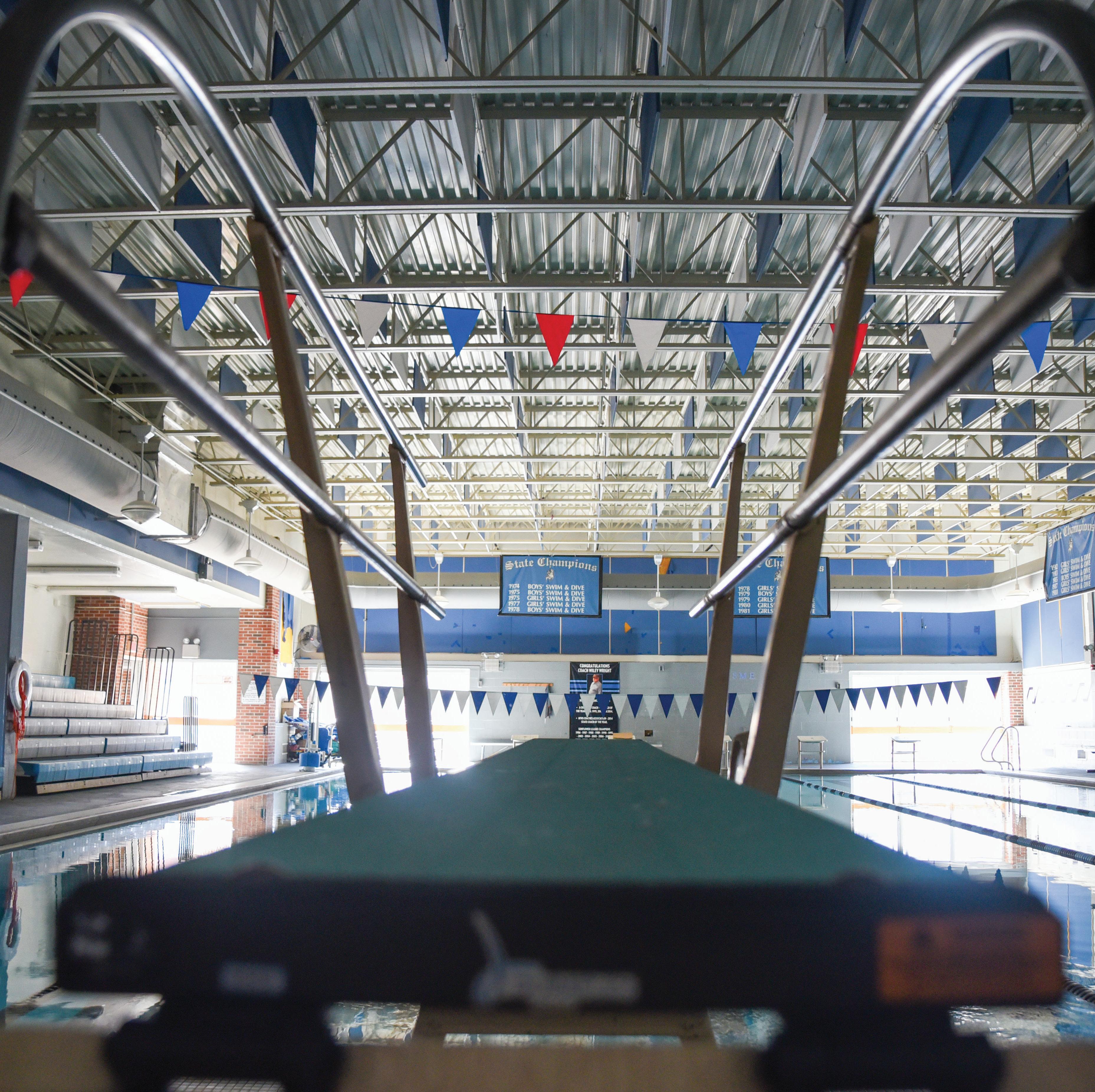
Hunt had been involved with the KU dive program before the pandemic caused it to shut down, and returned this year — bringing Erickson along. The program allows younger divers to use the KU facility for practice, providing times for private slots during the week. At KU, they have access to both a gym and pool where they’re able to practice dives without getting into the water.
“Since we’ve been doing this, it’s helped so much,” Erickson said. “Just to build our skill and build our muscle memory. So the tryout won’t be as difficult.”
Although the drive was inconvenient, after signing up for the program, Hunt and Erickson were locked in which built their commitment throughout the time given into their practices. From leaving at 4:30 p.m., starting at 5:30 p.m. and heading back home at 8 p.m.
Compared to local pools, the KU dive program offers the experience of what diving would be like outside of high school. They are practicing in a college environment with coaches that work with professional athletes every day.
AMY MCANAREY

The opportunity came around from recommendations by Hunt’s parents who thought it would be a good chance to prepare for East dive tryouts. By repeating the same motion over and over, their dives are now tight and concise.
The East dive team only has 10 spots, making tryouts exceedingly competitive — especially for freshmen. This led the two girls to begin driving to
“I think it all goes back to building confidence,” McAnarney said, “KU was a different place where they had to perform and practice and having that experience will just help with working with that level of coaching is good from a mental standpoint as well.”
Now the girls look forward to their upcoming tryout at the end of this month, feeling physically and mentally ready for when they walk into the East pool.
Lawrence every Monday to prepare for the upcoming season. EAST PARENTTHERE IS A BIG importance of dry-land practice for diving because you just automatically think of water for diving. But I especially think the KU program has such a big emphasis on the dry land warm-up.LESSONS AT BLUE VALLEY HIGH KU DIVING PROGRAM LESSONS AT BLUE VALLEY HIGH KU DIVING PROGRAM
every week to train for East dive team tryoutsAbby and Reese’s former diving experiences that prepared them for the East dive team story by maggie condon
LANCER LAC ROSSE — A local team with East athletes — hired a new Defensive Coordinator, Jordan Schmid in December around the same time as Shawnee Mission Girls’ Lacrosse hired a new Offensive Coordinator, Aiden McEnerny. Schmid embodied all the ideas that Lancer Lacrosse head coach Patrick Schmitt was looking for: someone with organizational skills, dedication to the team and — most importantly — the ability to join the “brotherhood” of the team.
“It’s great to have a coach that you can rely on during the game,” Schmitt said. “But how can you come to us if you have a real-world problem? How can I help you in a big brother type of role, while also maintaining that coach relationship?”
This came naturally to Schmid as his lacrosse coaches were some of his biggest mentors throughout his life, since starting his lacrosse career in seventh grade.
He played both offensive and defensive midfield at Marquette University. During his fifth year there — in graduate school — he retired from the sport due to multiple torn ACL’s.


But he didn’t want his injuries to stop his love for the sport, so he came on as a coach to remain involved with the team for his final year at Marquette.
With his roughly one year coaching
experience at Marquette, he was excited to hear about the open Lancer Lacrosse position from coworker and East 2018 alum Harrison Gooley, whose dad is a board member for the team. His Marquette teammate and East 2019 alum Griffin Freeze also encouraged him to go for the position. After his three technical interviews, it was “obvious” that the job was fit for him, according to Schmitt, so he accepted the job practically on the spot.

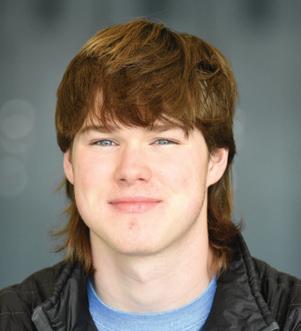
“For me if I can help the guys, be a role model and try to set them up for success in life whether that’s college as a next step or whether that’s going into trade school or thats the military or starting a family, whatever that is down the line if I can help them, learn lessons now thats gonna set them up for their future to me that’s what matters,” Schmid said.
women’s lacrosse league to join and play for after college graduation, but Muck mentioned the open position for coaching Shawnee Mission Girls Lacrosse instead. Soon after, Muck put McEnery in contact with Turpin.
Turpin’s key desire in his coach hiring process was to have recommendation from trusted colleagues and friends, so Muck’s recommendation of McEnery seemed to be a great fit.
IF I CAN HELP THE guys, be a role model and try to set them up for success in life... whatever that is down the line... that’s gonna set them up for their future — to me, that’s what matters.
JORDAN SCHMID
DEFENSIVE COORDINATOR
Meanwhile, the girls’ lacrosse team was looking for a new offensive coordinator. Head Coach Lance Turpin wanted someone that he could trust, so he had high hopes when his friend, owner and director of KC Lacrosse Club Kallie Muck gave him a name.

Originally coach-prospect McEnerny reached out to Muck looking for a
Turpin had already seen her play at Sion, heard that she coached summer leagues and even realized that her brother had coached his son. Not to mention the National Championship she won while playing at Benedictine College.
“I’ve seen her play in high school, and she was hard to stop,” Turpin said.
Since having a phone interview with Turpin being offered the position, McEnerny has been to a couple of the team’s preseason practices. Sophomore and varsity midfielder Brynn Delaney has already felt the positive impact from the new coach.
“She seems like she’s very invested in everyone, like it doesn’t need to be just Varsity or just JV and she knows what she’s doing, like her lacrosse IQ,” Delaney said.
WE’VE ALWAYS HAD strong talent, so we want some invested. He’s already helping us at practice and the changes are like day and night.
COLE JACKSONWE WANT SOMEONE who is going to lead us, and always helping us get better and have fun — someone who is going to make it fun to go to practice and not afraid to make mistakes.

The boys and girls lacrosse teams introduce two newly-hired coaches





The Spongebob Musical invited elementary and middle schoolers to their Matinée in full capacity for the first time since 2020 on Jan. 31 to prepare for their shows Feb. 2-4
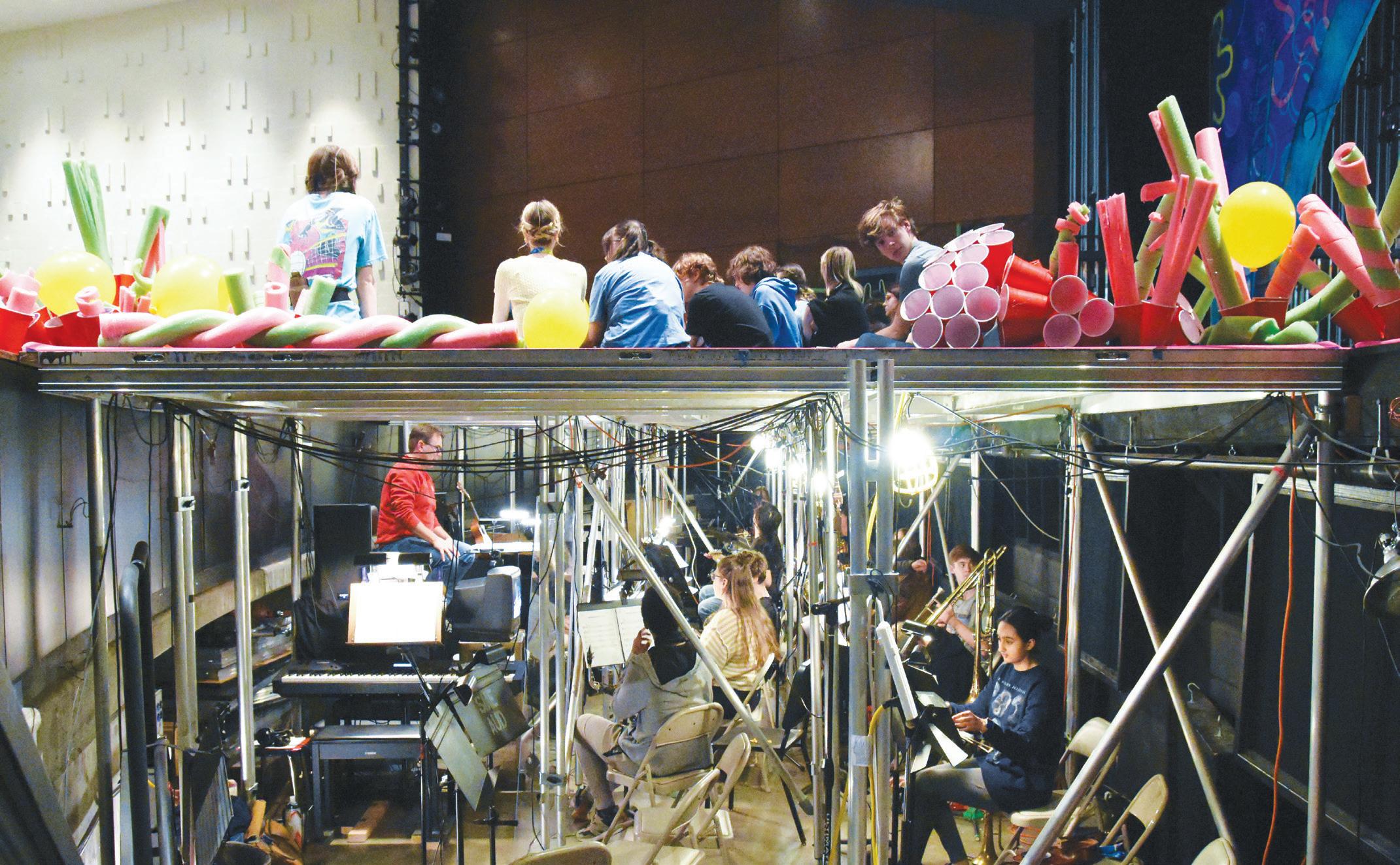

RIGHT The cast gathers at the front of the stage after finishing their run through while the band recieves notes from Mr. Foley. “[The directors] aren’t afraid to get after us if we aren’t giving it our all,” Fritz Sullivan, who plays Patrick Star, said. “Sometimes notes go for as long as an hour after the show.”









ABOVE Costumes hang from a rack ready for changes by the characters of Spongebob, “Last year was… just assigning dresses based on measurements,” member of costume run crew senior Audrey Morehead said. “We didn’t really have to make much except maybe a pocket square here or there. This year, it was definitely a lot of hot glue. Most costumes had bases and then to make them bikini-bottomish, we had to find some funky ribbons and ornaments that we could glue, sew, or somehow attach

LEFT
prepares backstage rigs for the first dress rehearsal. Torkelson is a part of set run crew and this is his eighth East production.
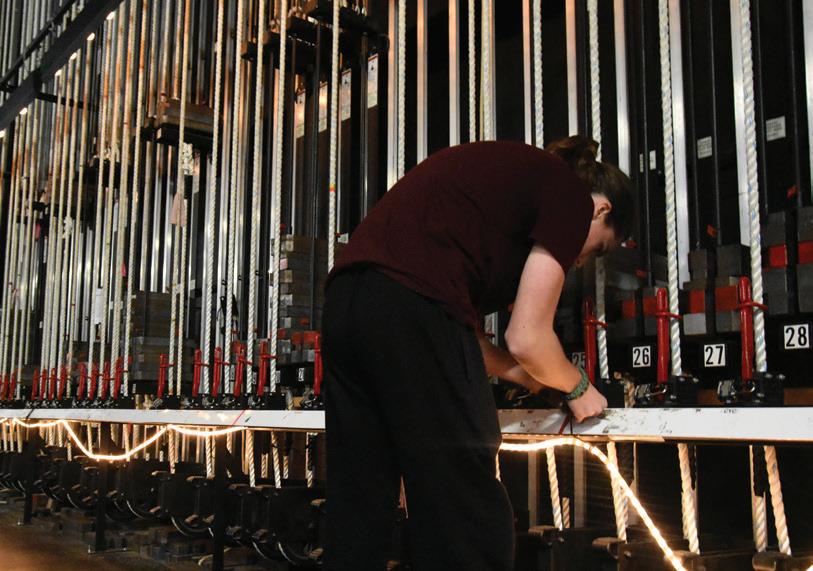
LEFT
as



“[My favorite part of the musical was] spending time with the people in the musical,” Oligmueller said. “The bonding is an entirely different experience than what you get from other parts of the school.”
Use this QR code to purchase photos from this event
Senior Zachary Torkelson photo by I paige bean Senior Wyatt Oligmueller performs Mr. Krabs. photo by I paige beanThe Lancer would have a different role in different cartoons, but what would that character be?



a
THE LANCER WOULD be Sandy because Sandy is defnitely more well rounded. She does martial arts, knows science, doesn’t give up, is very high energy and keeps the team together.
KATE WHITEFIELDSENIOR
I FEEL LIKE HE’D be like the Duff Man, like he’d just barge in at random times and be like, ‘Ahhh, go East!’ He’s just a common reoccurring character, but he’s just there because it’s funny.
 POPPY BILLINGSLEY
POPPY BILLINGSLEY
SENIOR
b c d e f
The Lancer would appear in this show as the supreme leader of a futuristic-yet-medieval world.
The little Lancer wears his gear every day, no matter the adventure.

This helpful armored hero would be the head of his kingdom’s army and tell bad dad jokes.
In a feature show of his own, the Lancer in this art style would be the fearless leader of a group of heroes.
